Cuba - 2019
In April-May 2019 I had a 6-week trip to Central America.
(Melbourne - Los Angeles – Mexico – Cuba – Belize – Guatemala –
Mexico City – Los Angeles - Melbourne)
After my 14-day IntrepidTravel tour from Mexico City to Cancun, I had a-hour flight to Havana for my week-long IntrepidTravel trour of Cuba.
Havana
Havana was founded by the Spanish in the 16th century and due to its strategic location it served as a springboard
for the Spanish conquest of the Americas, becoming a stopping point for treasure-laden Spanish galleons returning to Spain.
Old Havana was declared a UNESCO World Heritage Site in 1982.
The Cuban Capitol Building
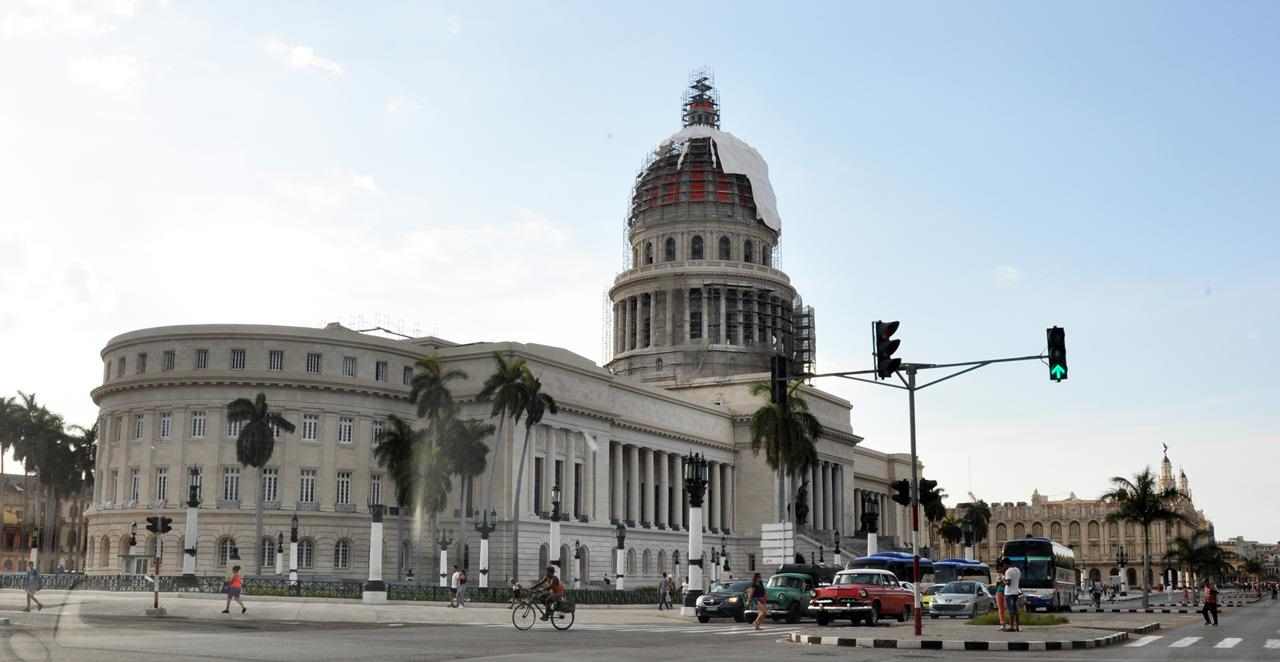

Gran Teatro de La Habana Alicia Alonso (Havana's Grand Theatre Alicia Alonso)
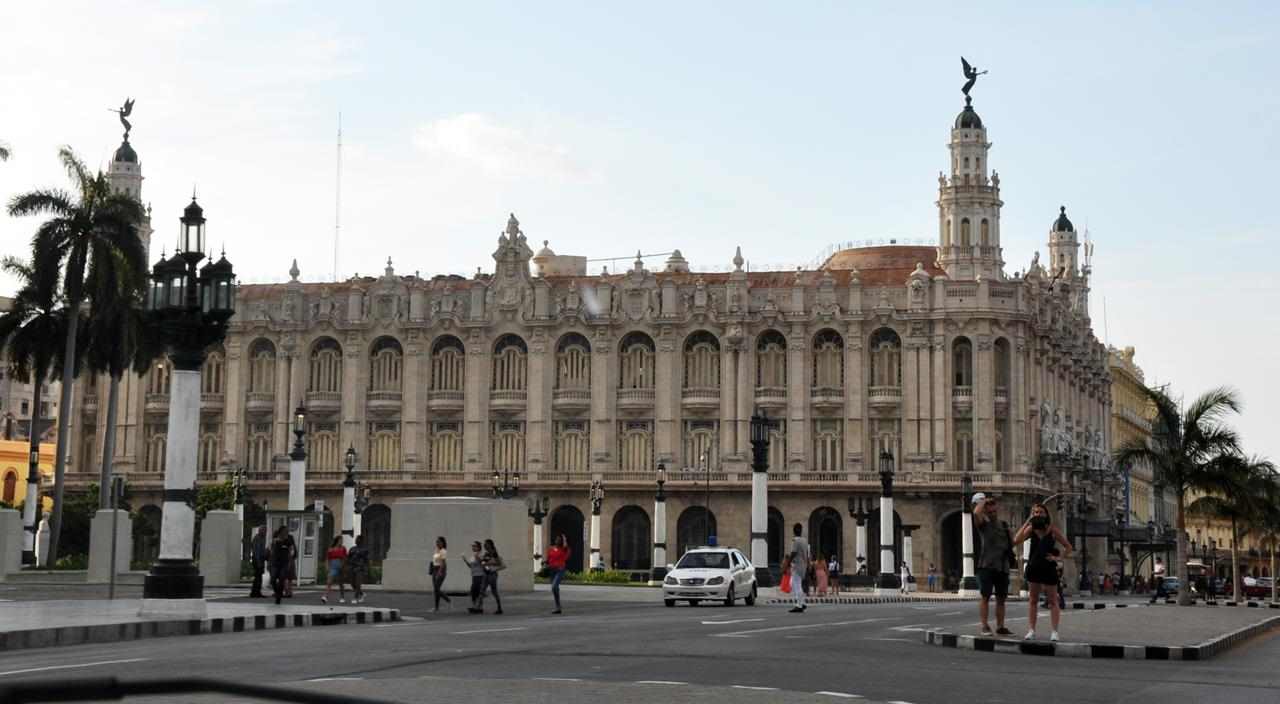
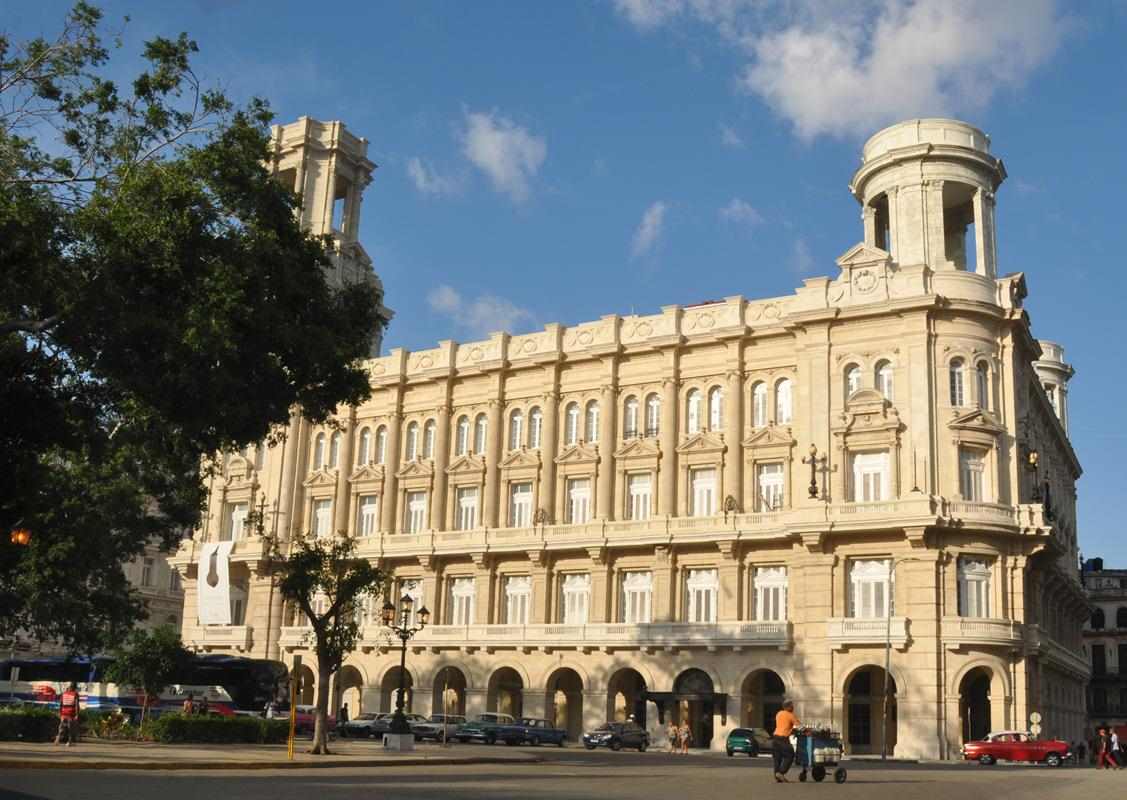
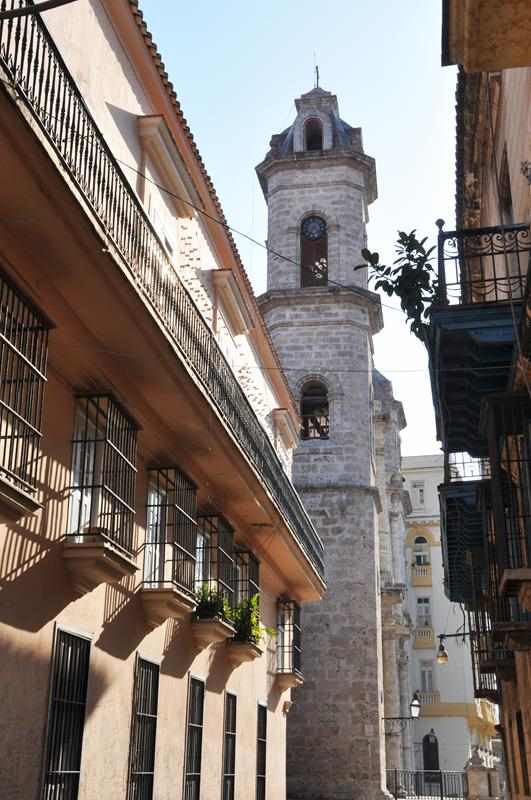
Havana Cathedral (Catedral de San Cristobal)
The Jesuits began construction of the cathedral in 1748 on the site of an earlier church and it was completed in 1777,
well after King Carlos III expelled the Jesuits from the island in 1767.
The Cathedral's front elevation is Baroque with asymmetrical bell towers.
One can see fossilized marine fauna and flora in the stone walls as the Cathedral is,
as many buildings in Havana are, constructed out of blocks of coral.
Christopher Columbus’ remains were kept in the cathedral between 1796 and 1898, before they were taken to Seville Cathedral in Spain.
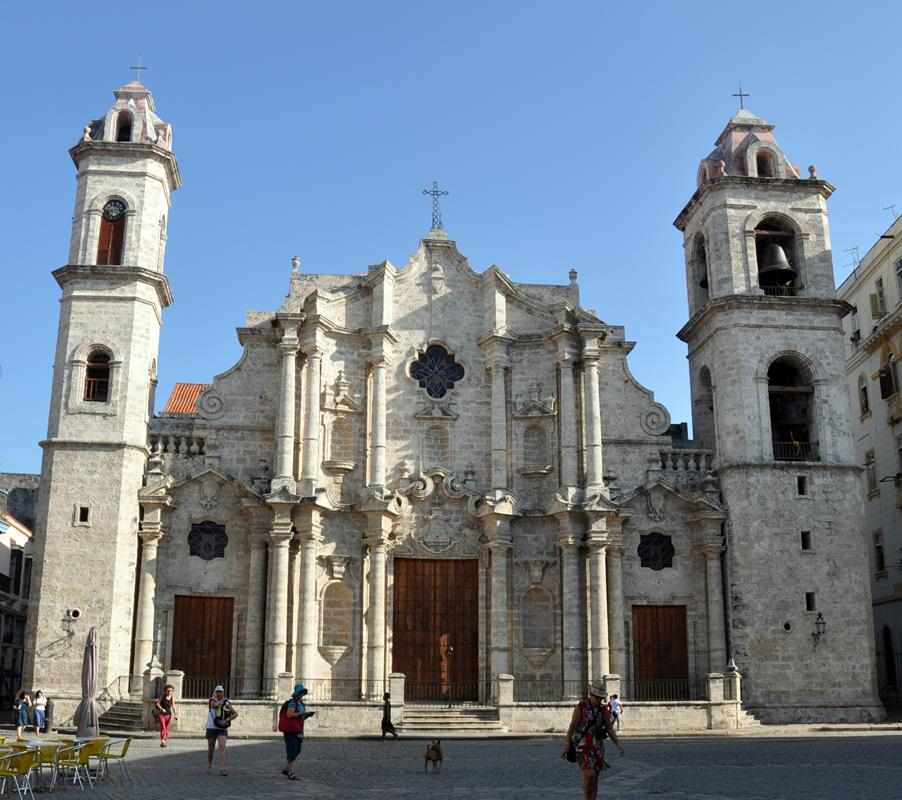
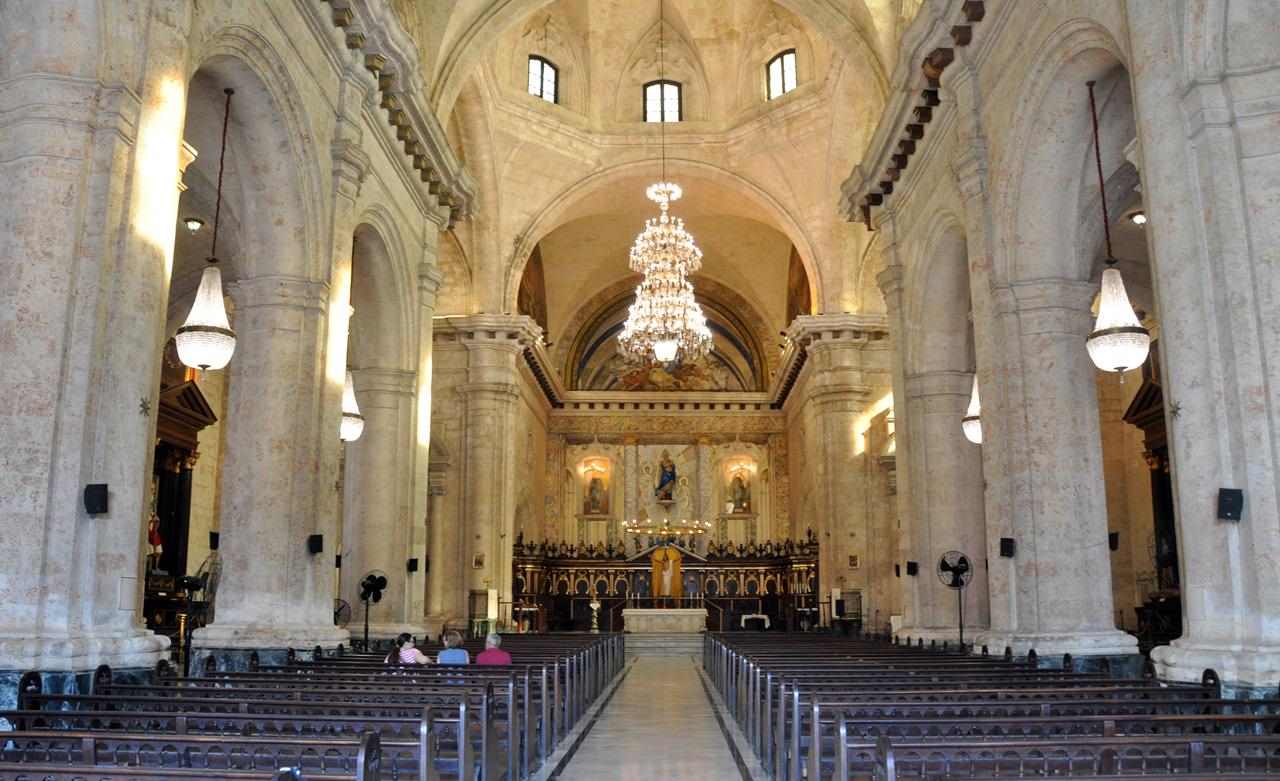
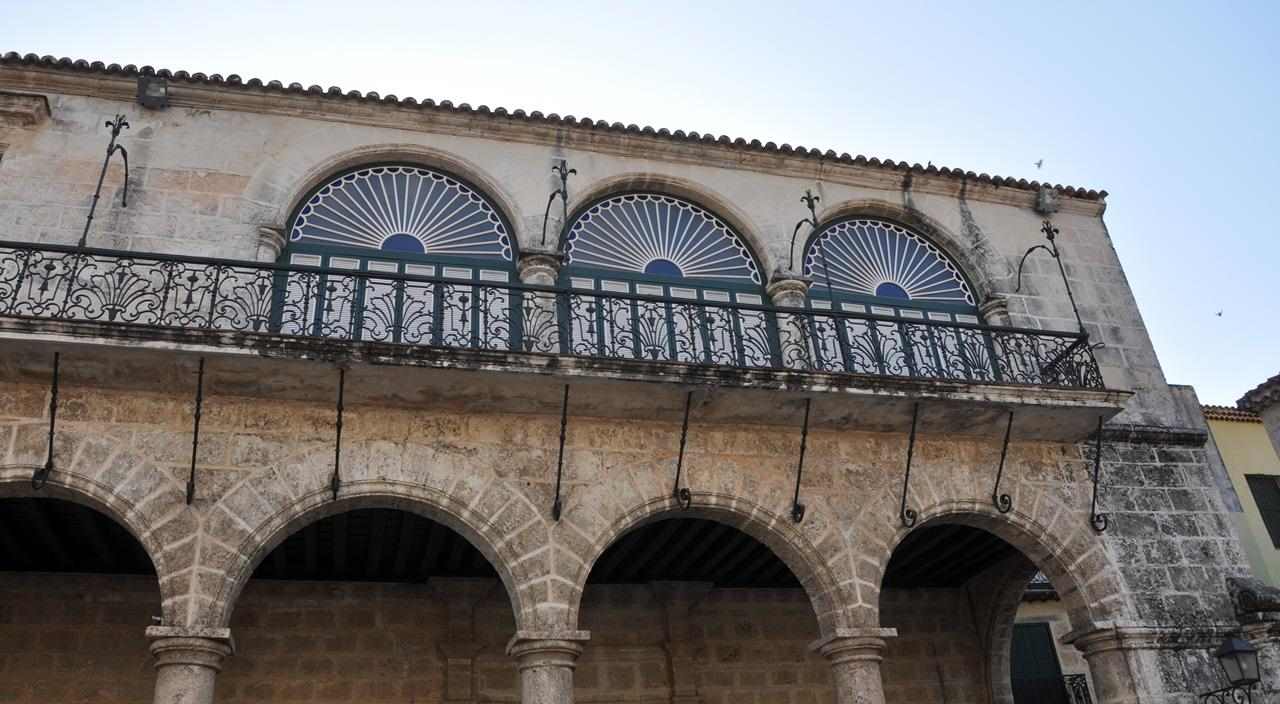
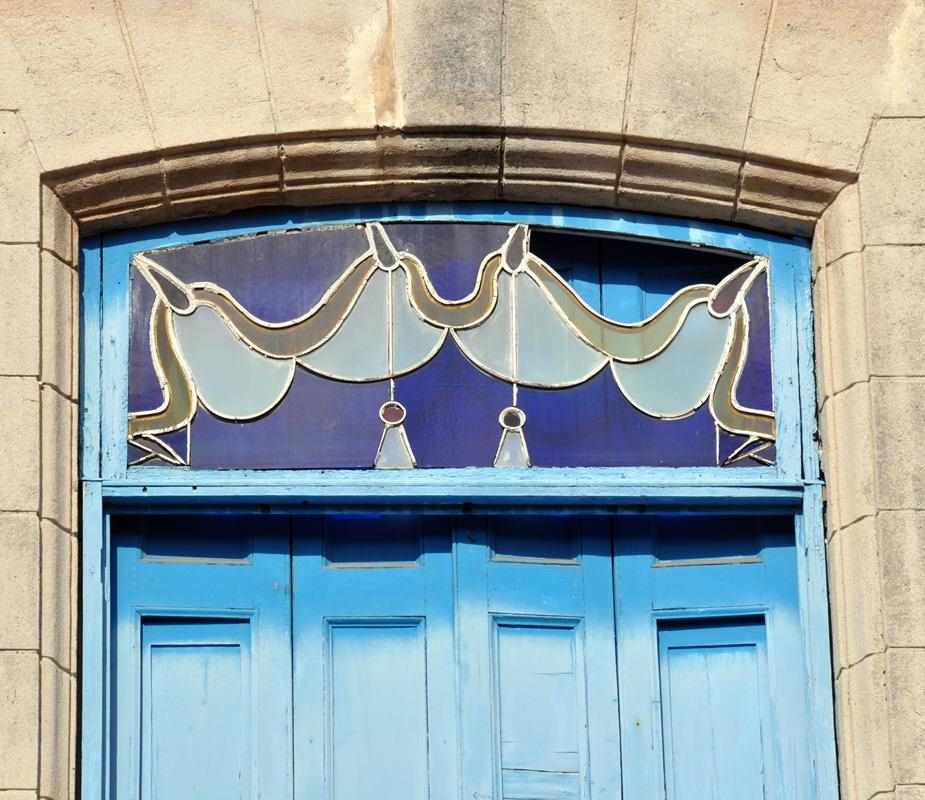
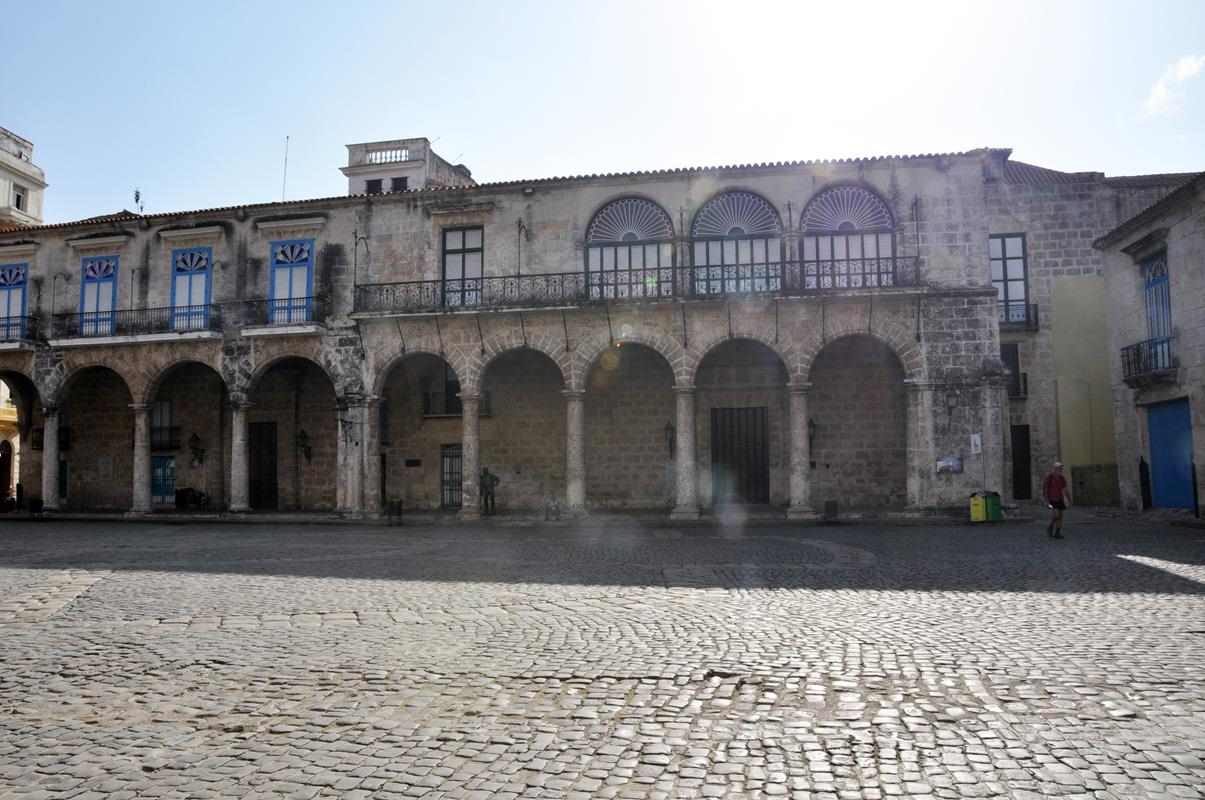
Old Havana has a number of city squares.
The Cathedral Square is bound by some fine former residences as well as the cathedral.
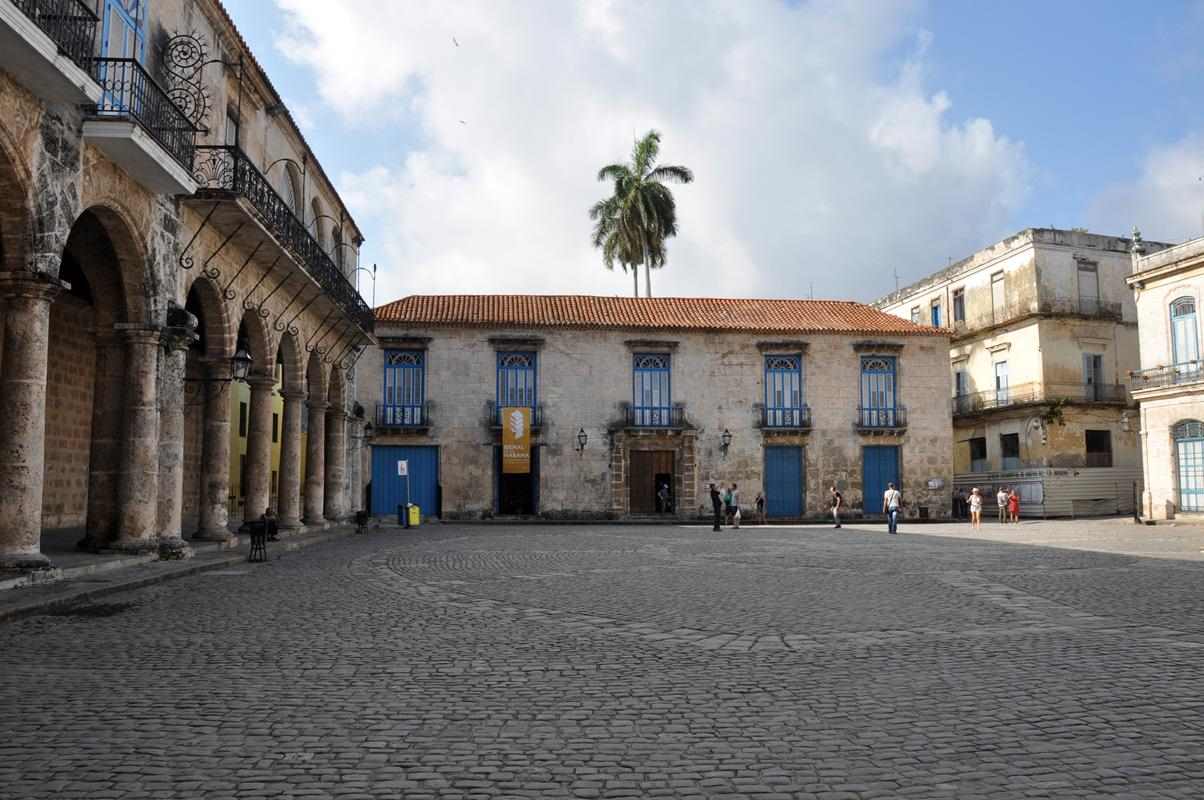
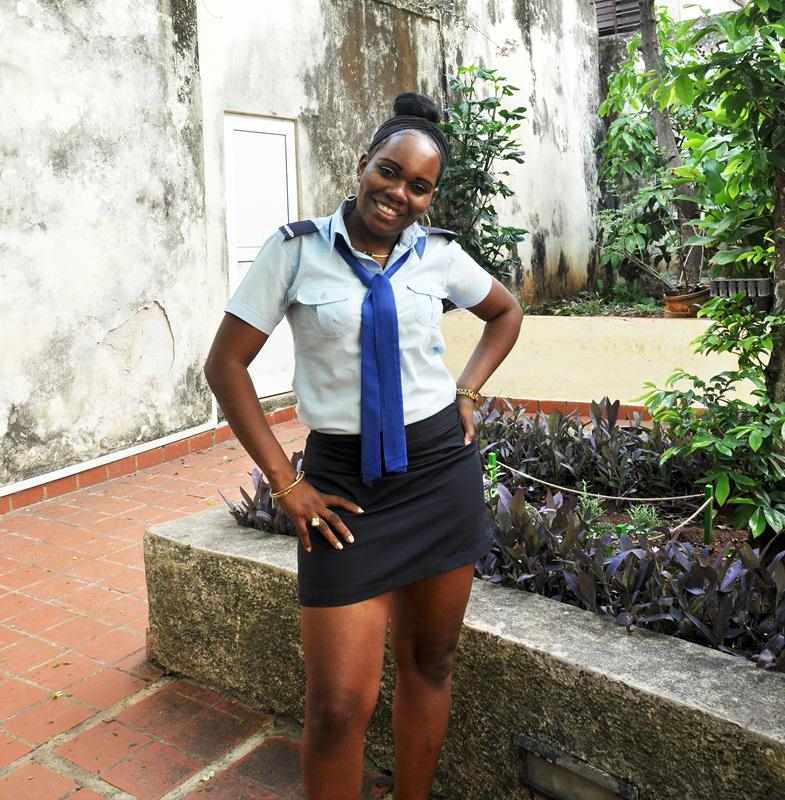
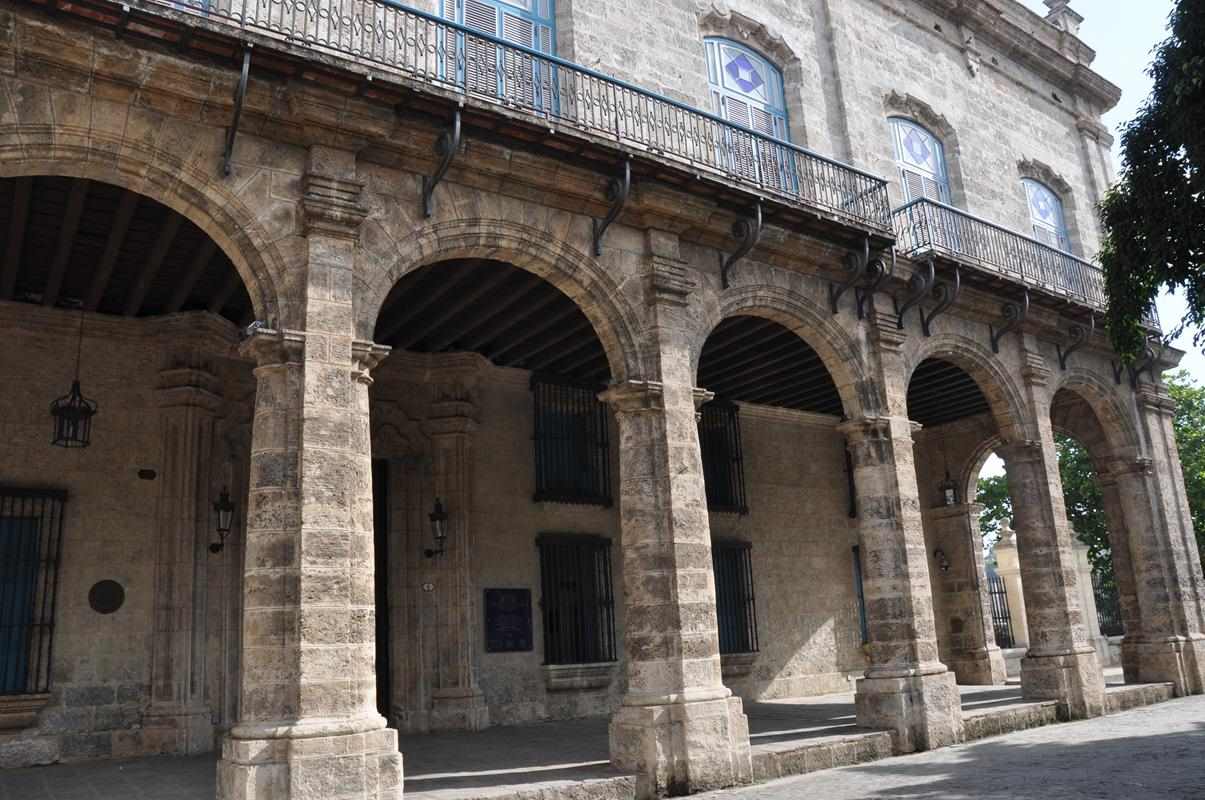
Havana began as a trading port, and suffered regular attacks by buccaneers, pirates, and French corsairs.
Morro Castle (Castillo de los Tres Reyes Magos del Morro), is named after the three biblical Magi.
It is a fortress guarding the entrance to Havana Bay.
The design was drawn up by the Italian engineer Battista Antonelli; originally under the control of Spain,
the fortress was captured by the British in 1762, and was returned to the Spanish under treaty terms a year later.
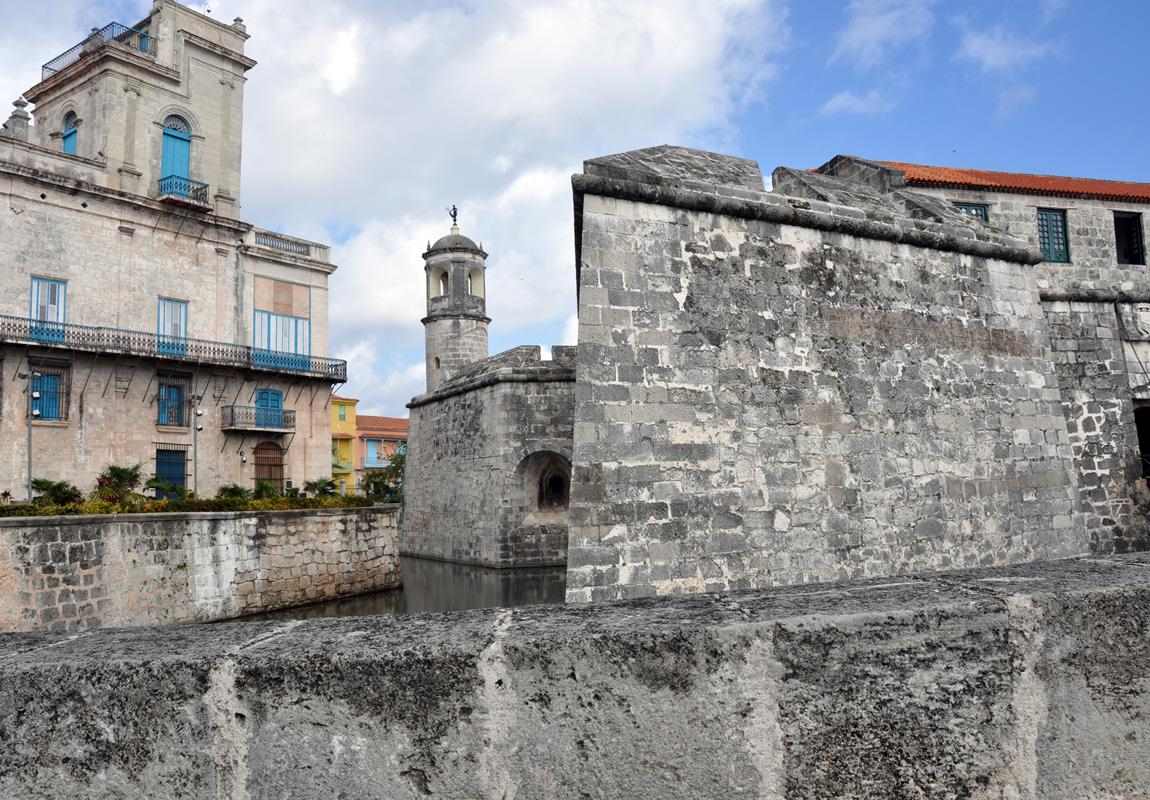
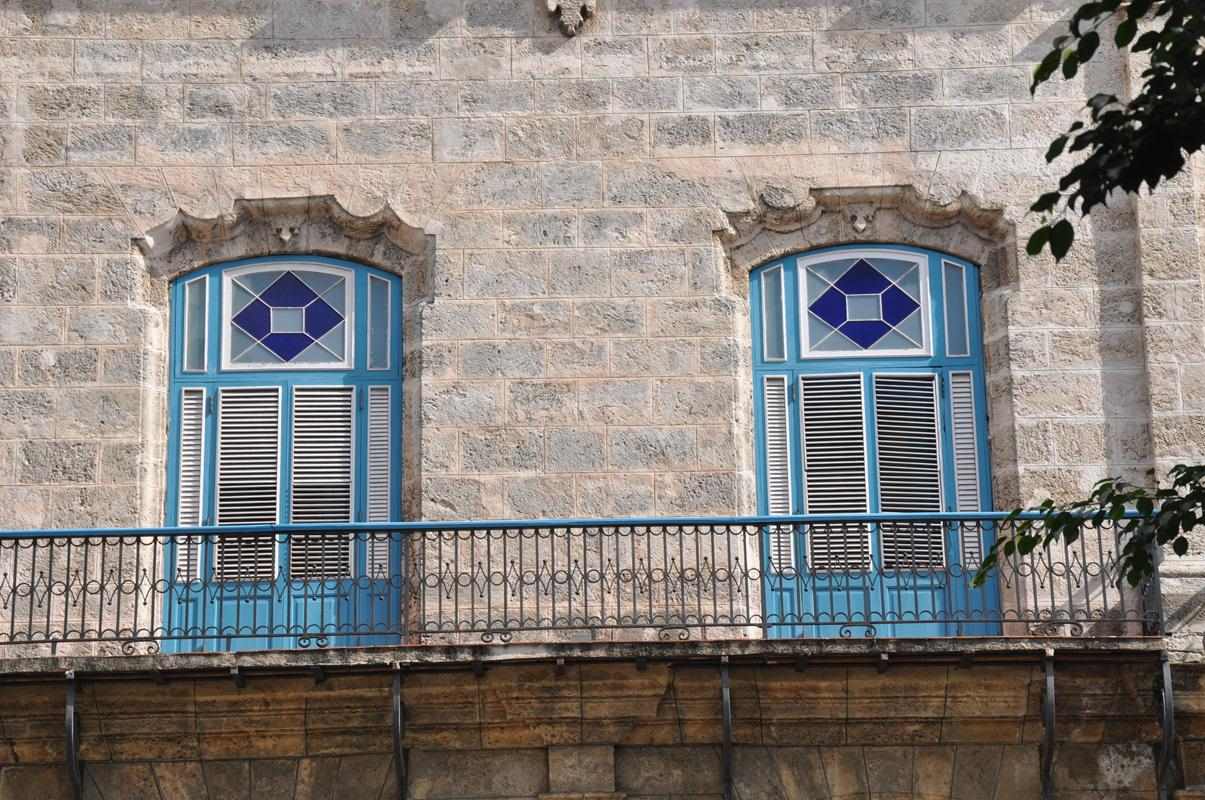


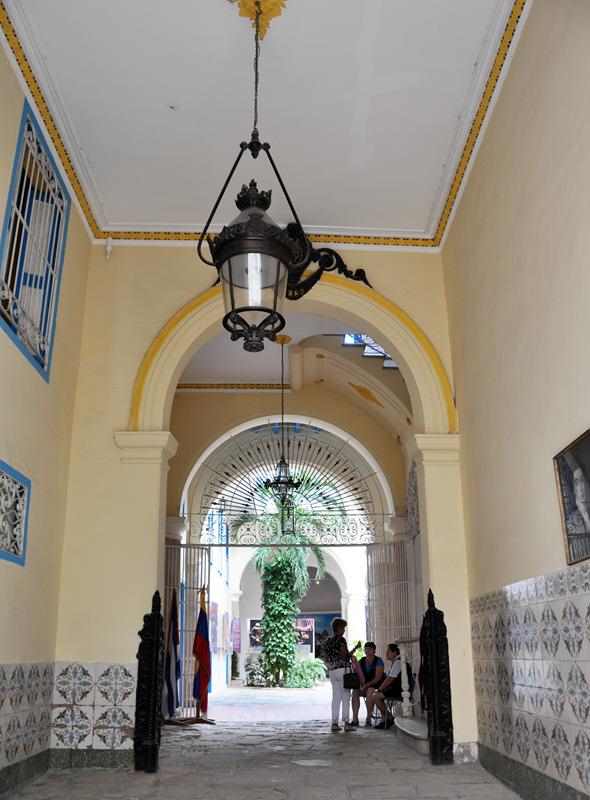
Plaza Vieja

Viaje Fantástico
No one knows the meaning behind this giant sculpture of a nude woman with a fork riding a rooster in Plaza Vieja.
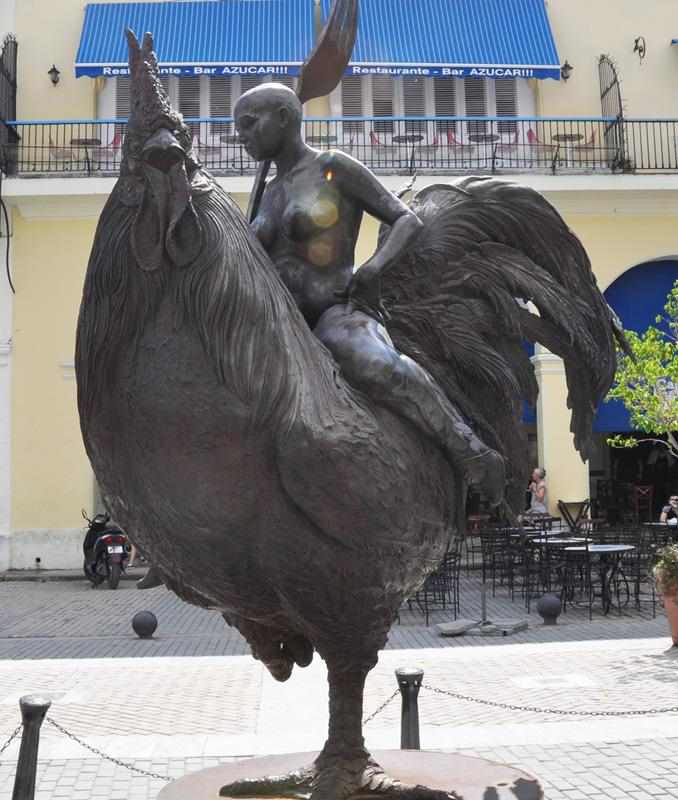
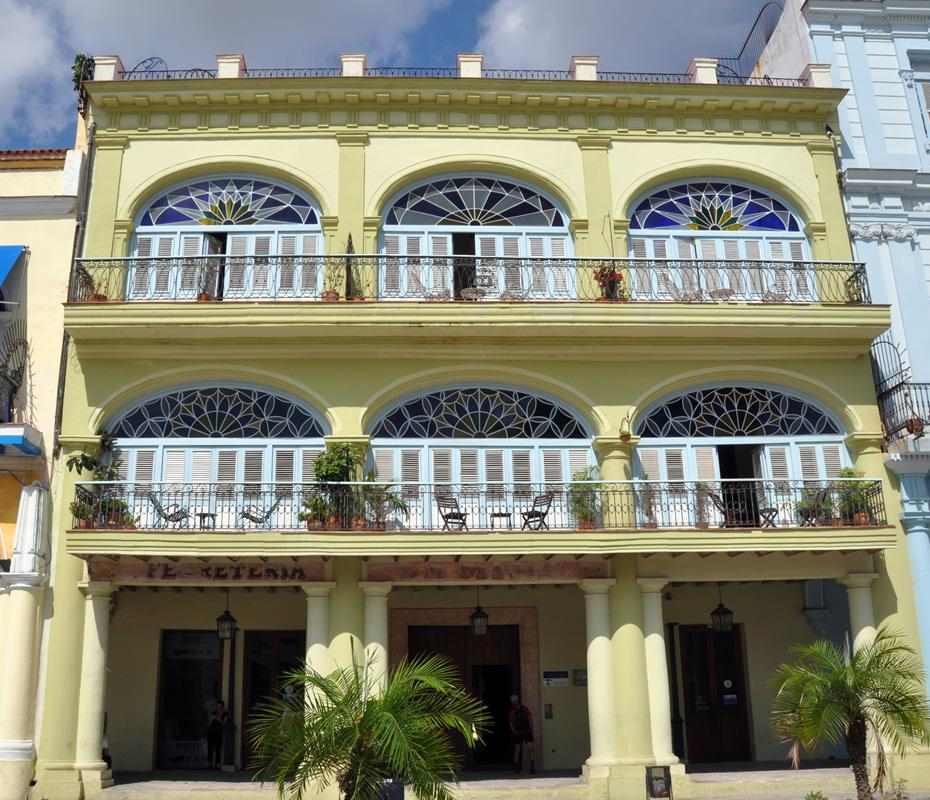
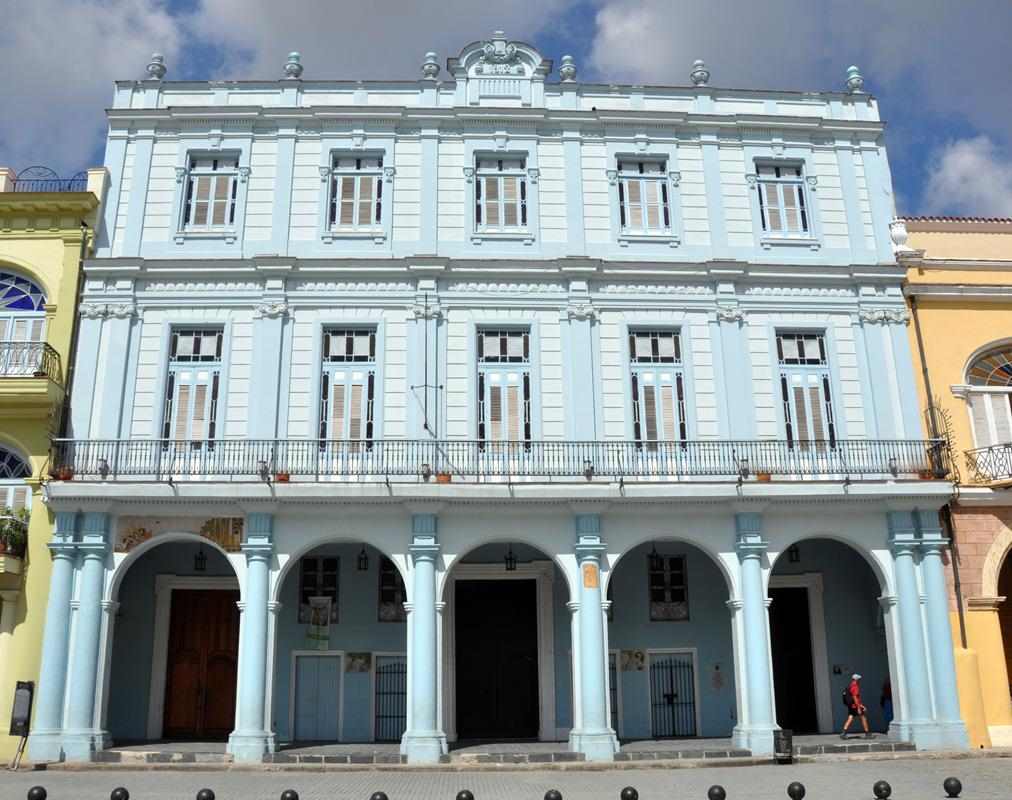


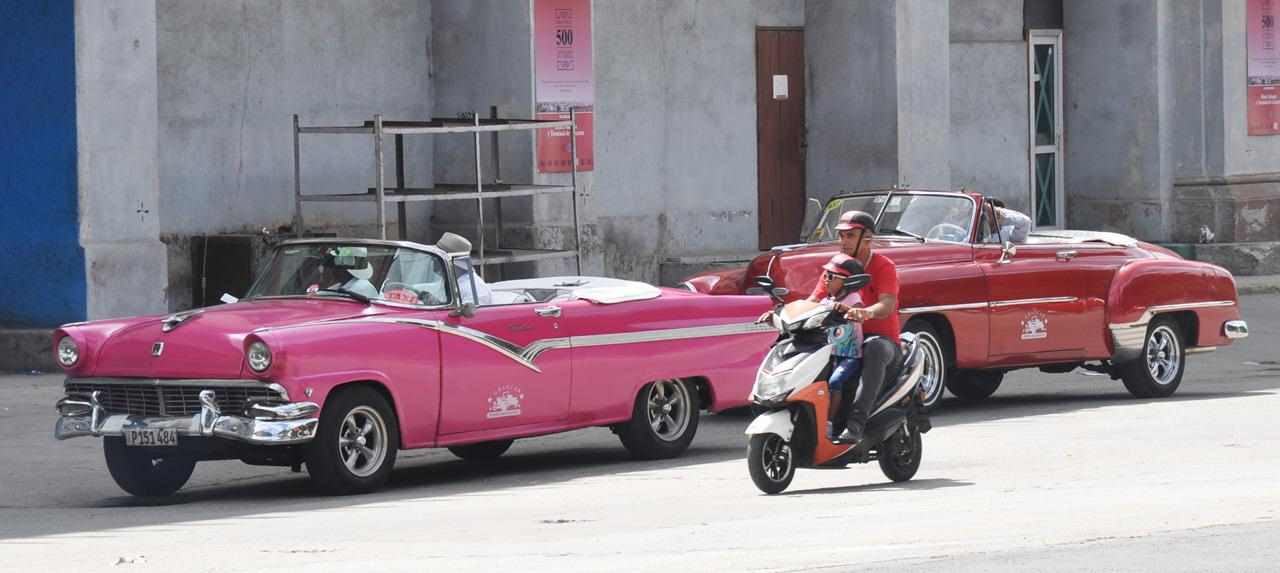
It is said that around the year 1600 the first fountain of the city could be seen at the San Francisco de Asis Square.
In 1836 it was replaced by a beautiful fountain made of white Carrara marble by Giuseppe Gaggini, under the good auspices of the Villanueva Count.
This fountain is called Fuente de los Leones (Lions Fountain).
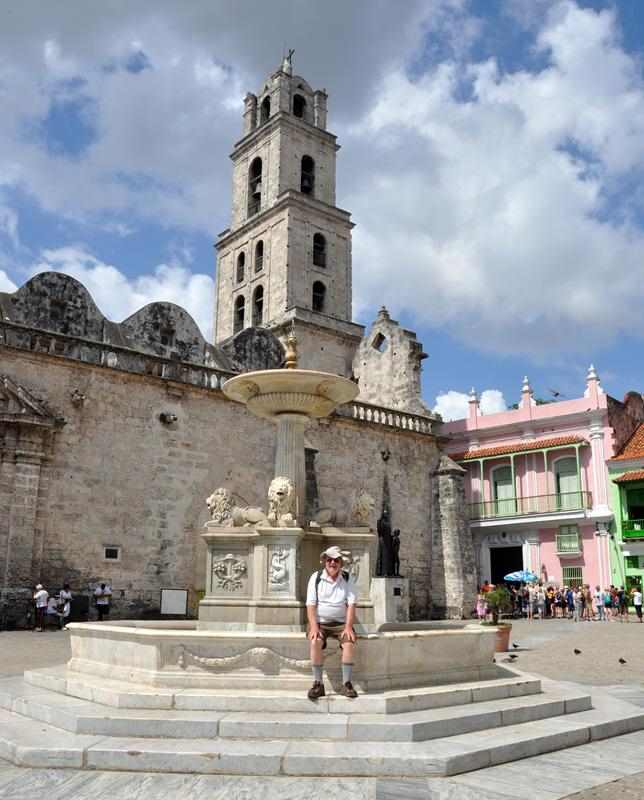
You did not have to look hard to see the old American cars in Cuba. They were ubiquitous.

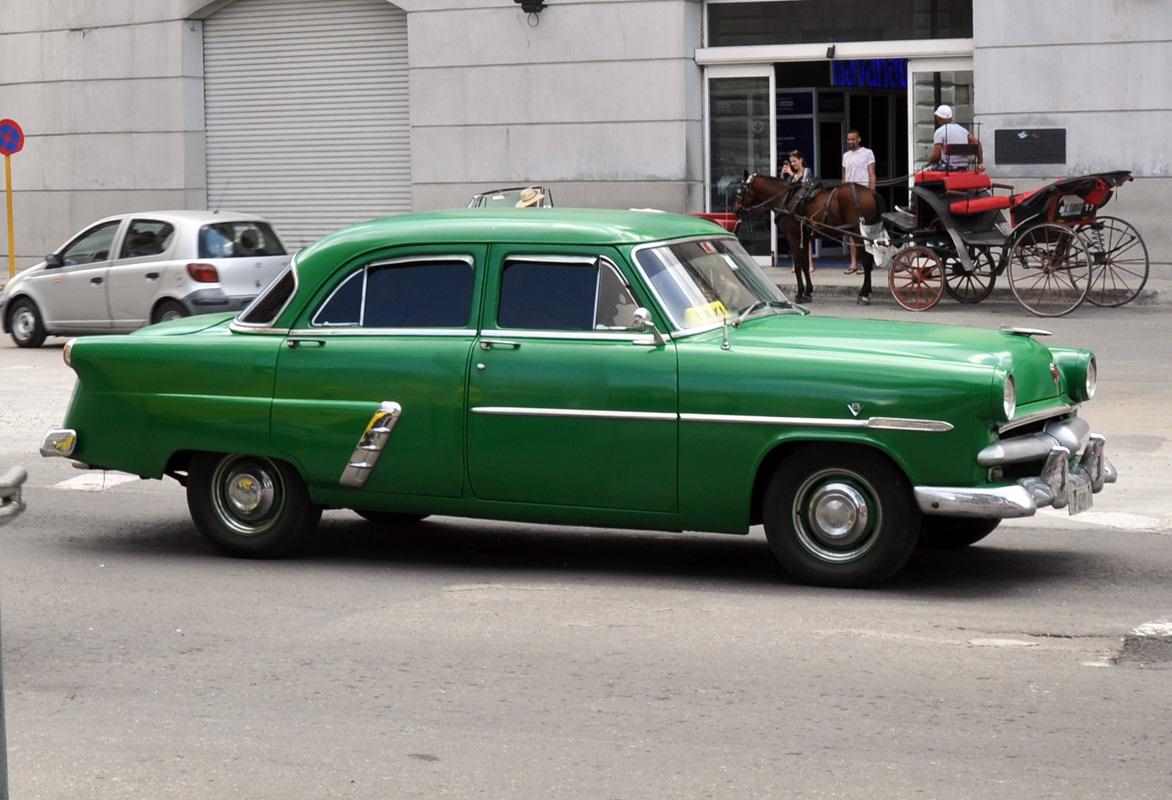
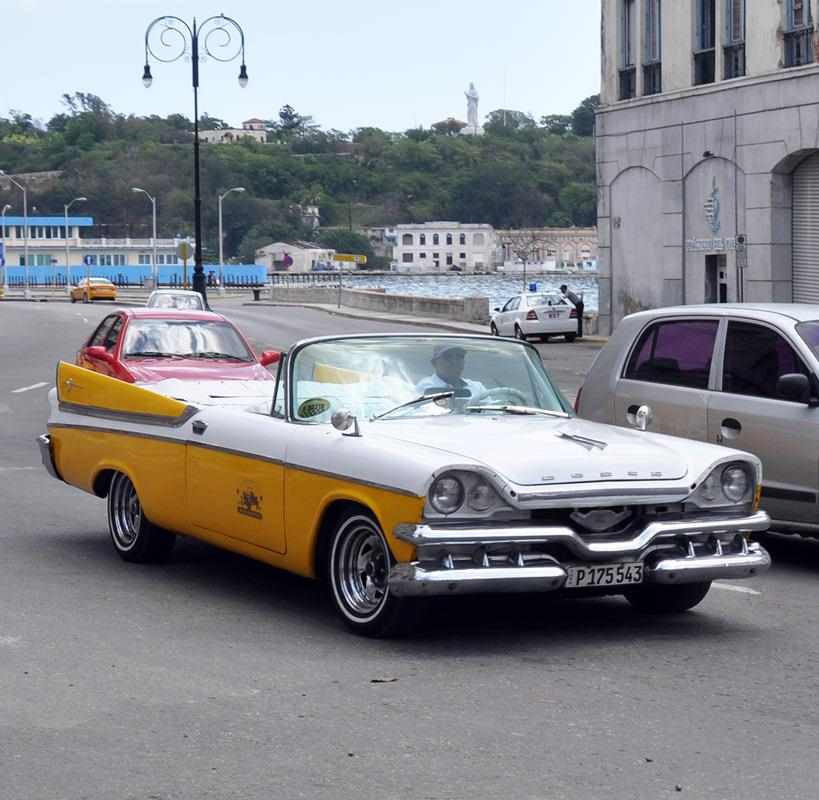
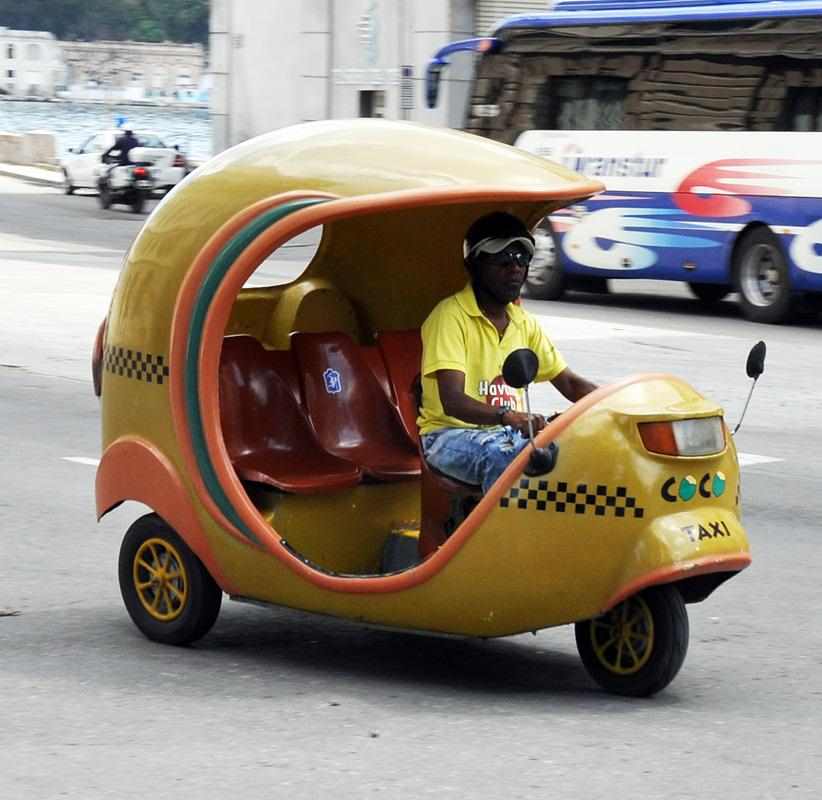
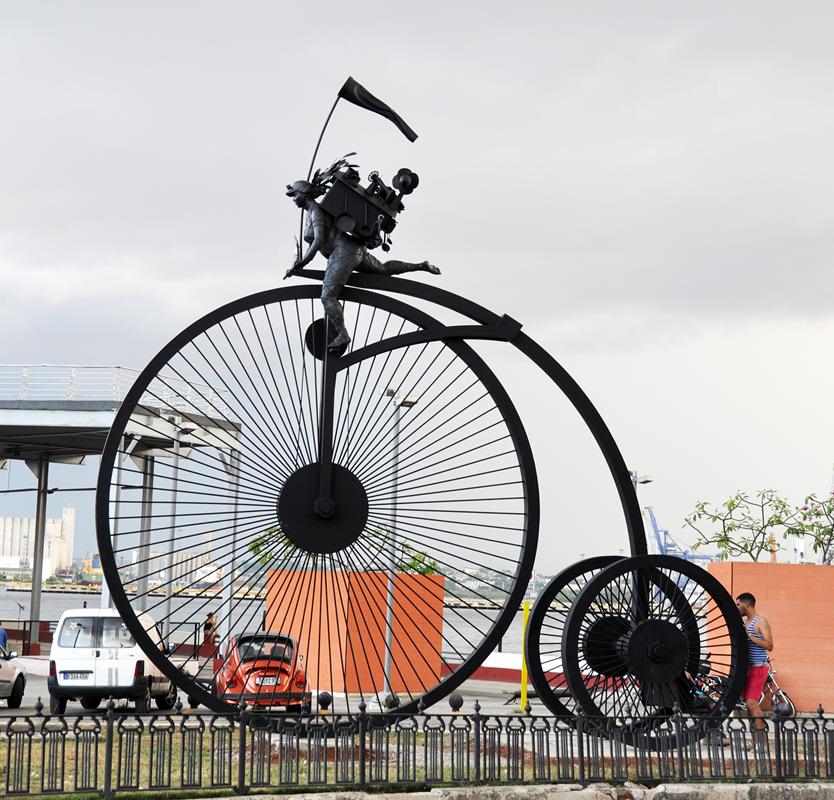


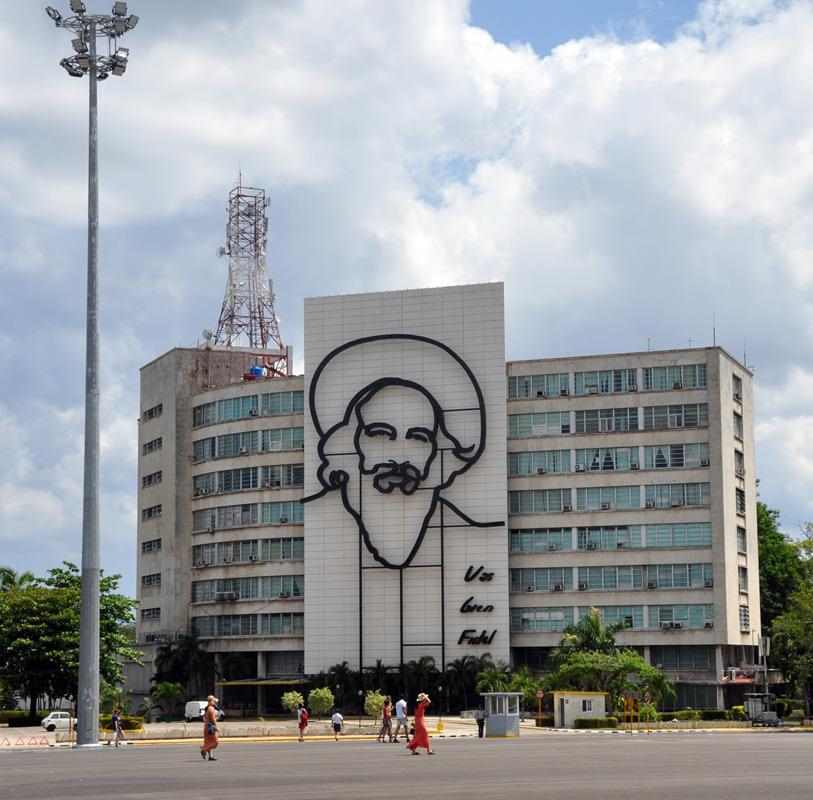
The José Martí Memorial (Monumento a José Martí) is a memorial to José Martí, located on the northern side of the Plaza de la Revolución.
It is the largest monument to a writer in the world.
José Julián Martí Pérez (1853 – 1895) was a Cuban poet, essayist, journalist, translator, professor, and publisher,
who is considered a Cuban national hero and an important figure in Latin American literature.
Through his writings and political activity, he became a symbol of Cuba's bid for independence against Spain in the 19th century.
From adolescence, he dedicated his life to the promotion of liberty, political independence for Cuba, and intellectual independence for all Spanish Americans.
His death was used as a cry for Cuban independence from Spain by both the Cuban revolutionaries and those Cubans previously reluctant to start a revolt.

We had a 3-hour trip in a modern, air-conditioned, 24-seat, Chinese-made bus from Havana to Viñales in the eastern area of the island of Cuba.
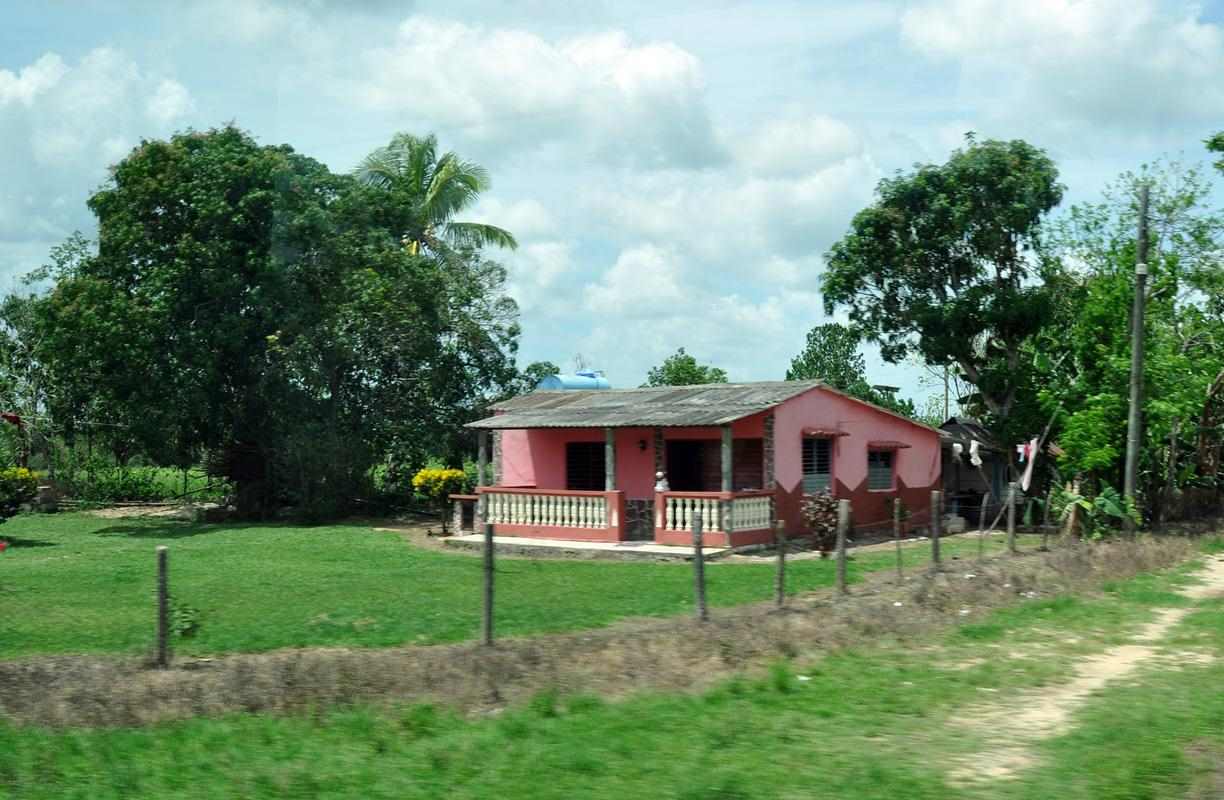
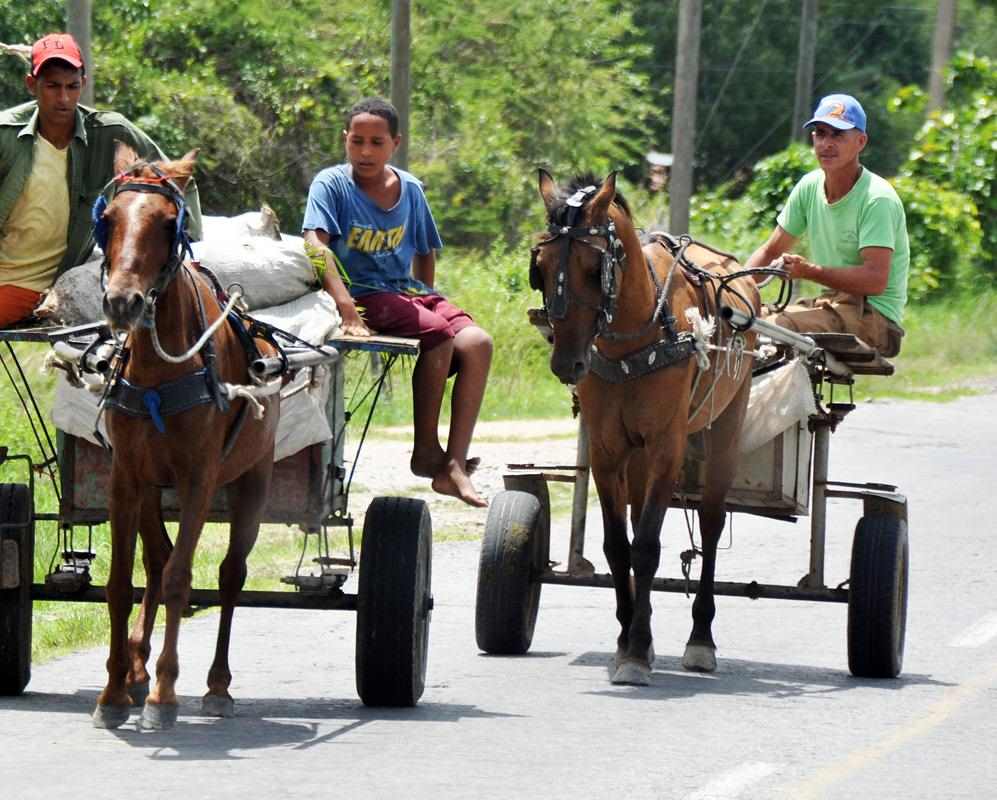
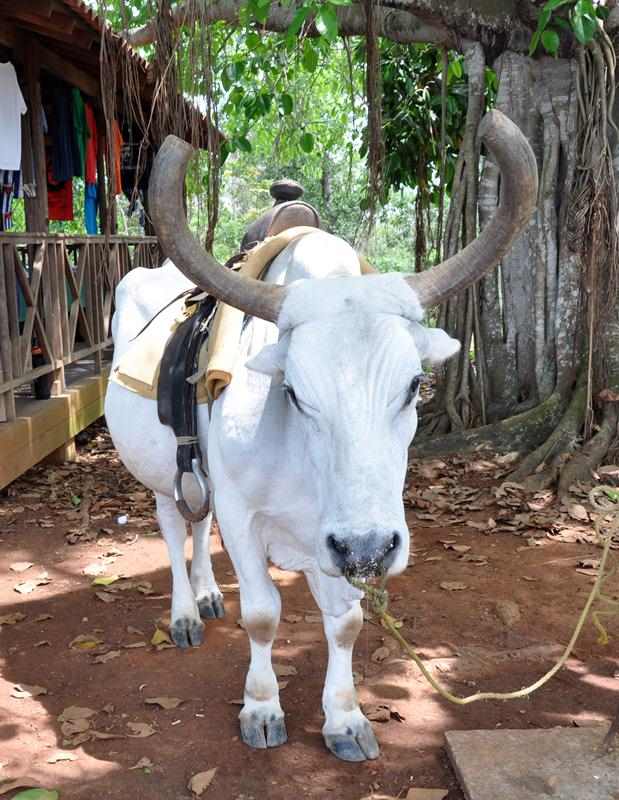
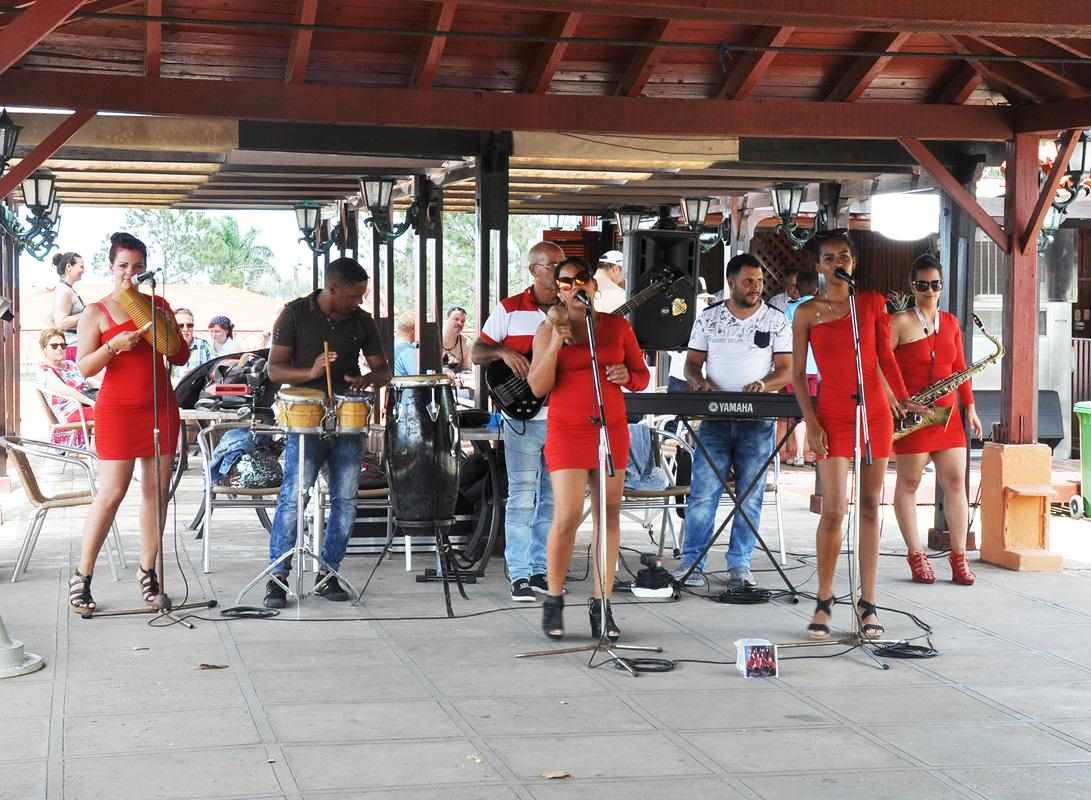
Overlooking the lush Viñales Valley.
The Viñales Valley has been listed as a UNESCO World Heritage Site for the outstanding karst landscape and traditional agriculture
as well as the local architecture, crafts and music.
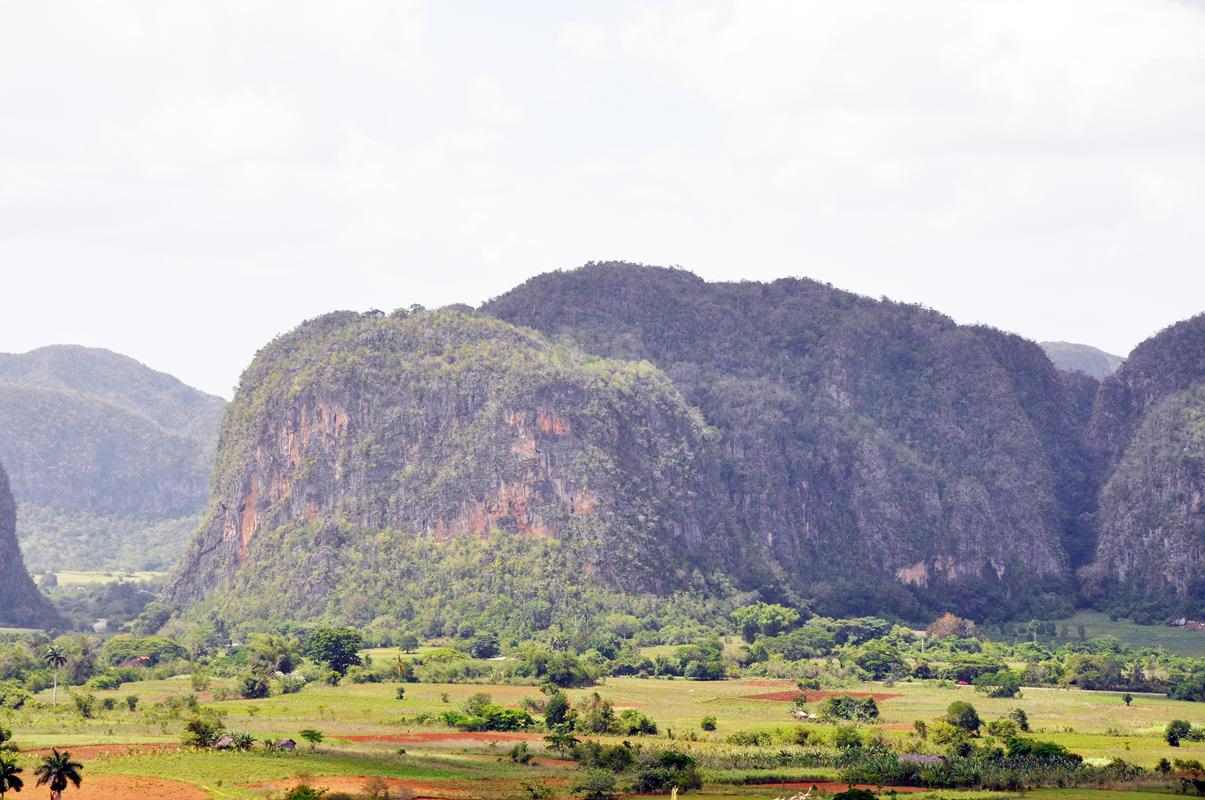

Viñales
Viñales is a small town and municipality in the north-central Pinar del Río Province of Cuba.
Tourism centered on the Viñales Valley is developing.
The Viñales Valley, a UNESCO World Heritage Site, is an agricultural area, where crops of fruit, vegetables,
coffee and especially tobacco are grown by traditional methods.
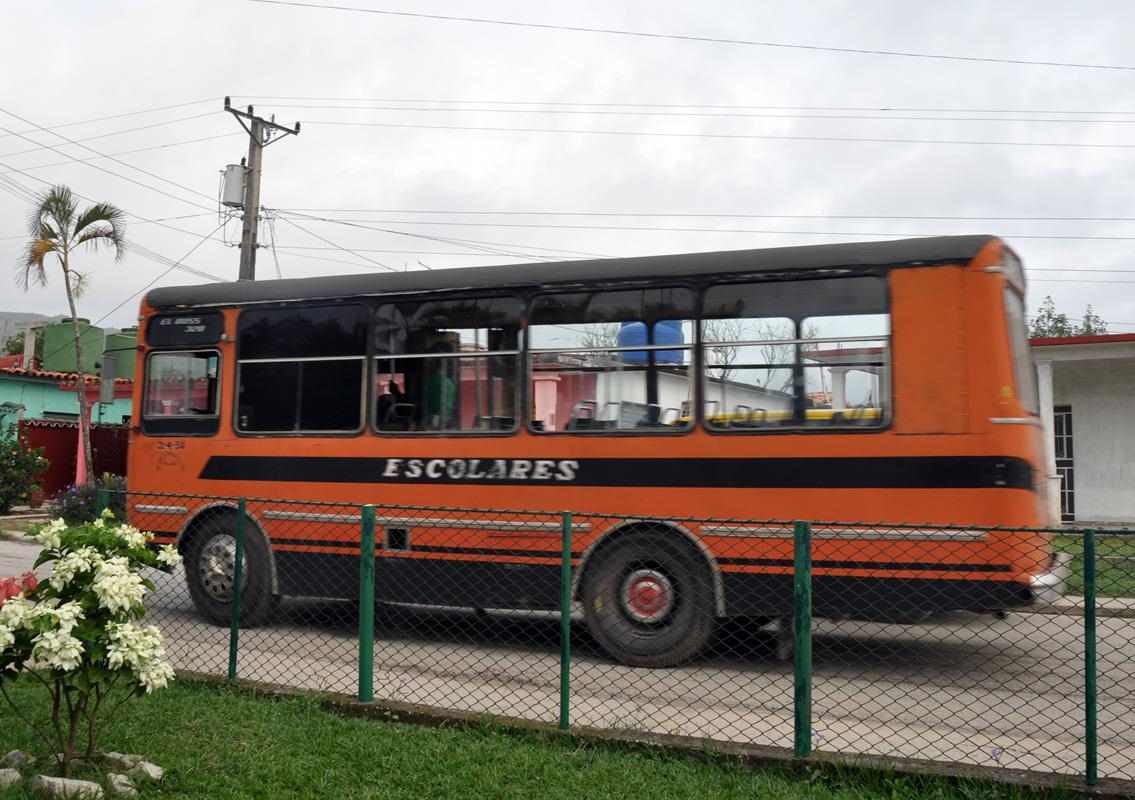
My room at the guesthouse, Casa Alberto, in Vinales.
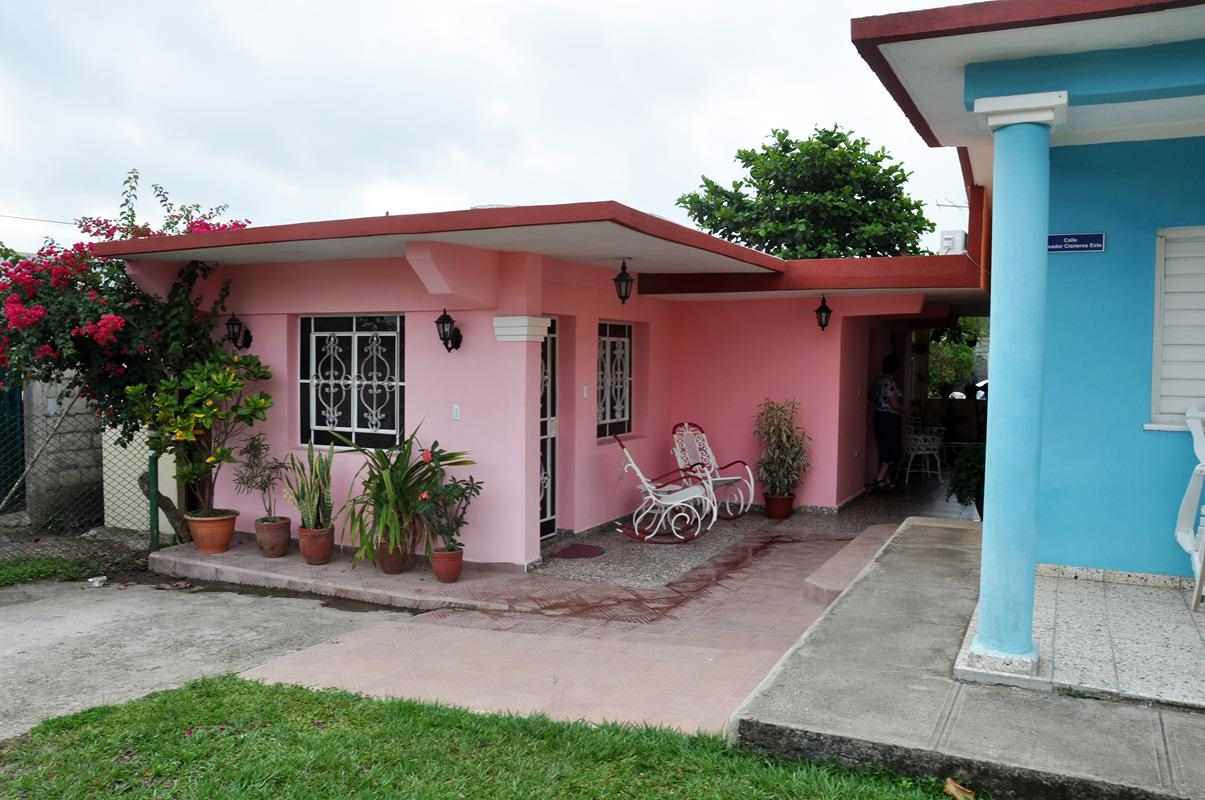
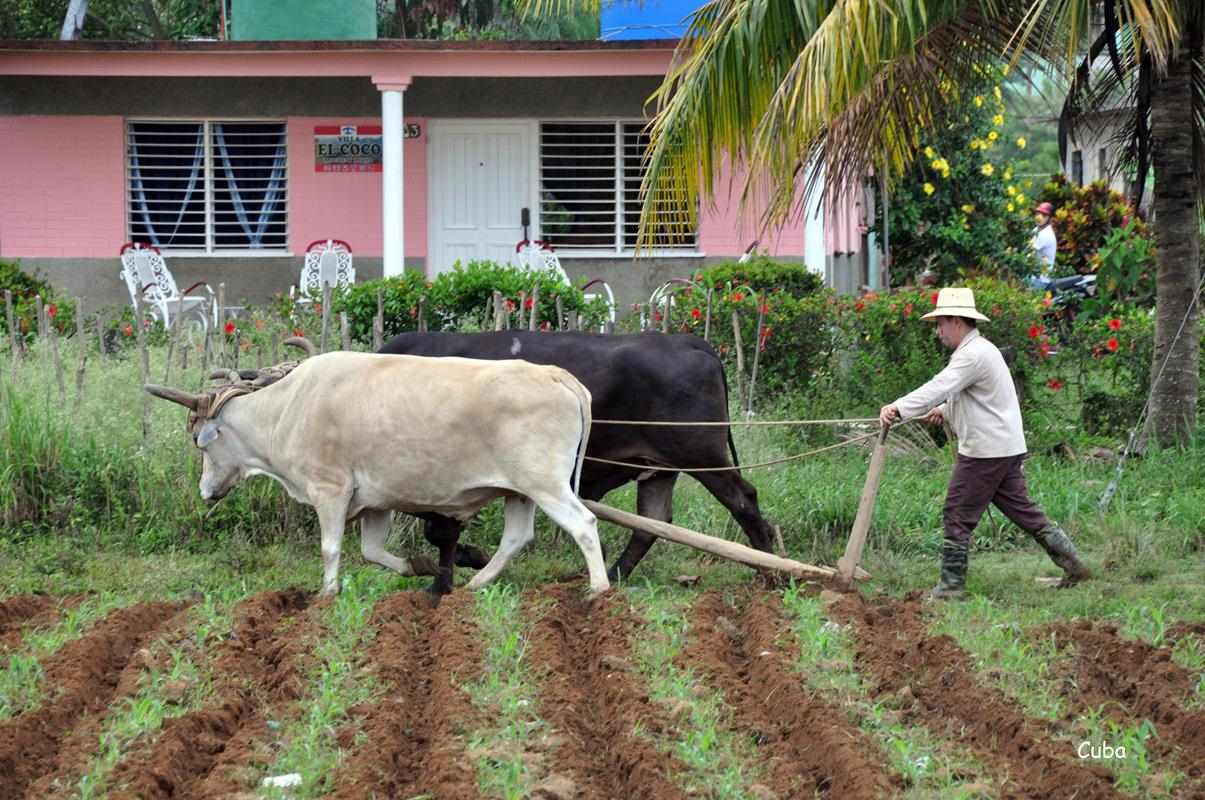

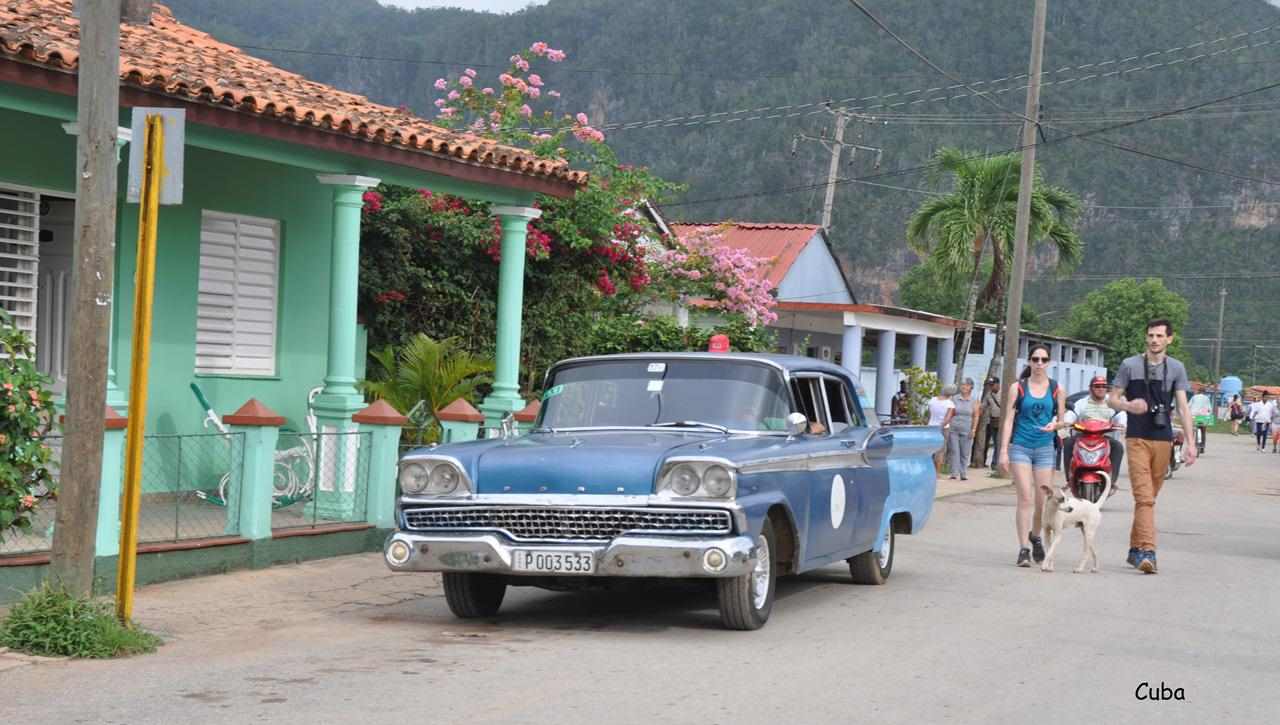
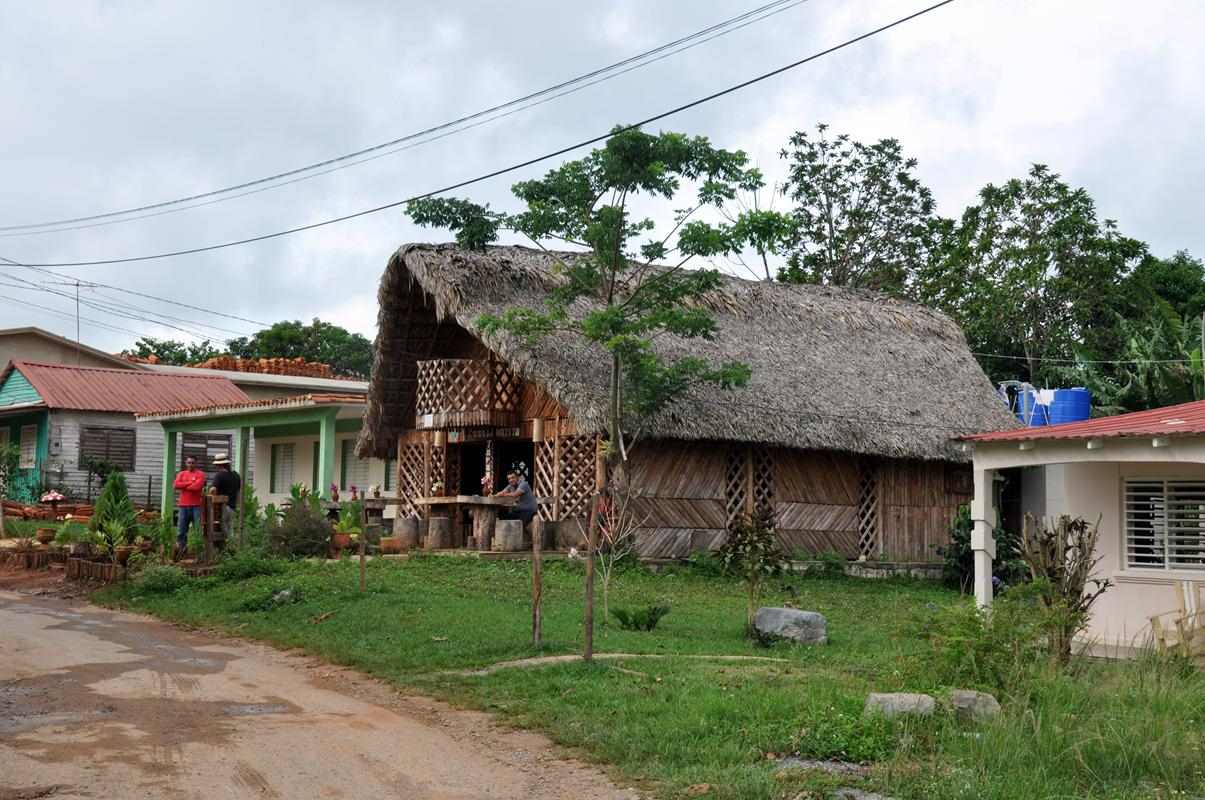
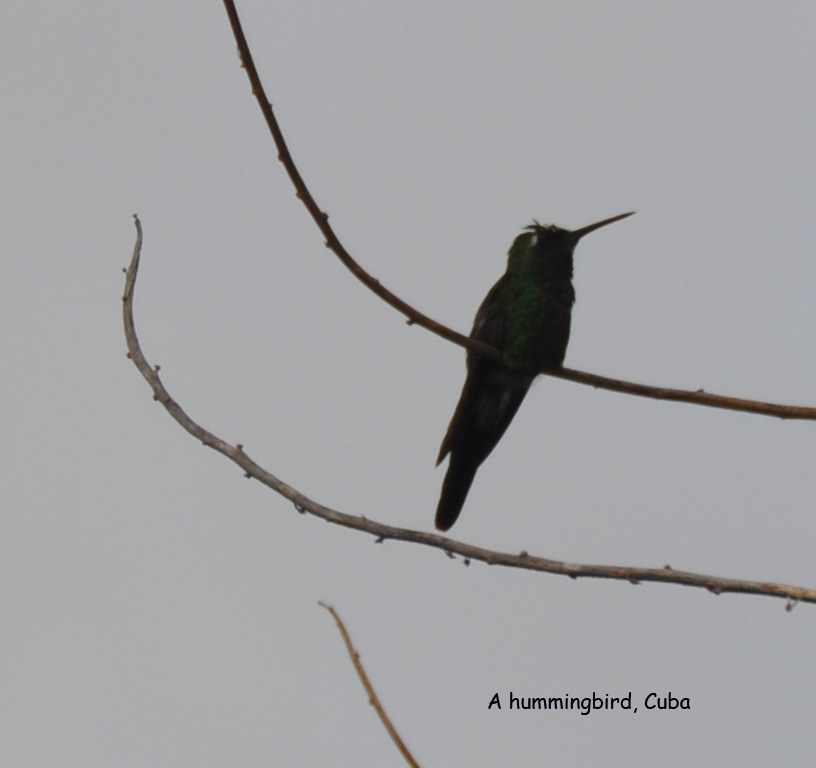
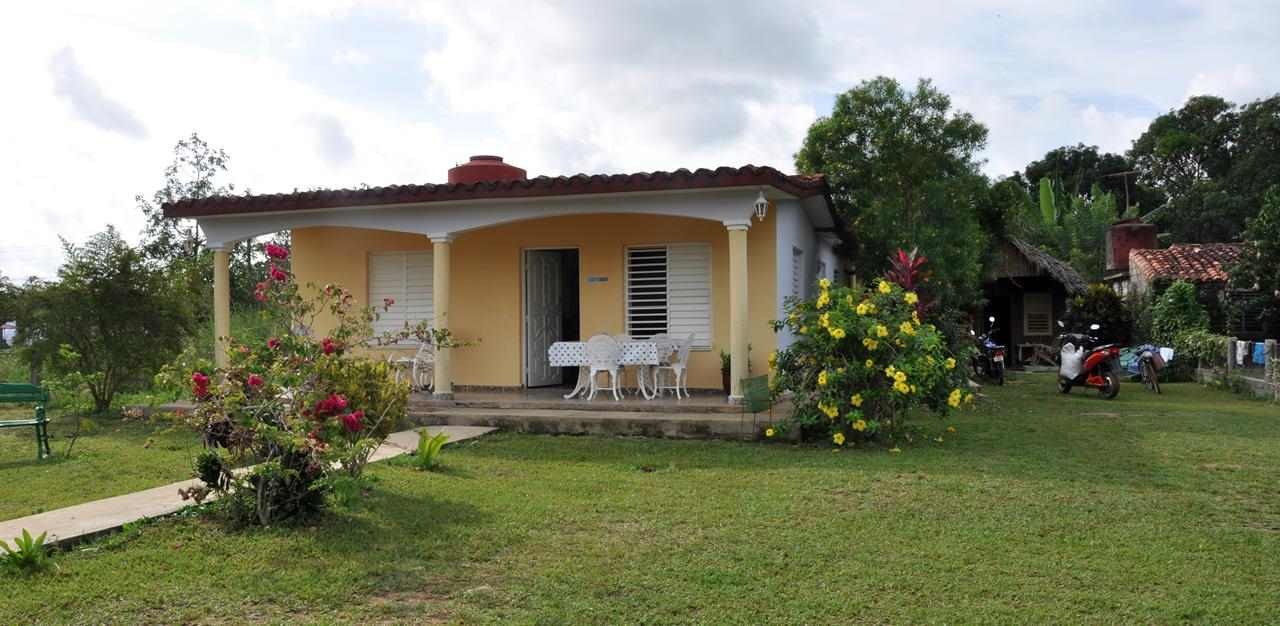
Viñales Valley farmland walk
We had a 4-hour walk through these rich farmlands in the Viñales Valley with a local guide, Alex.
The Viñales Valley has been listed as a UNESCO World Heritage Site for the outstanding karst landscape and traditional agriculture
as well as the local architecture, crafts and music.
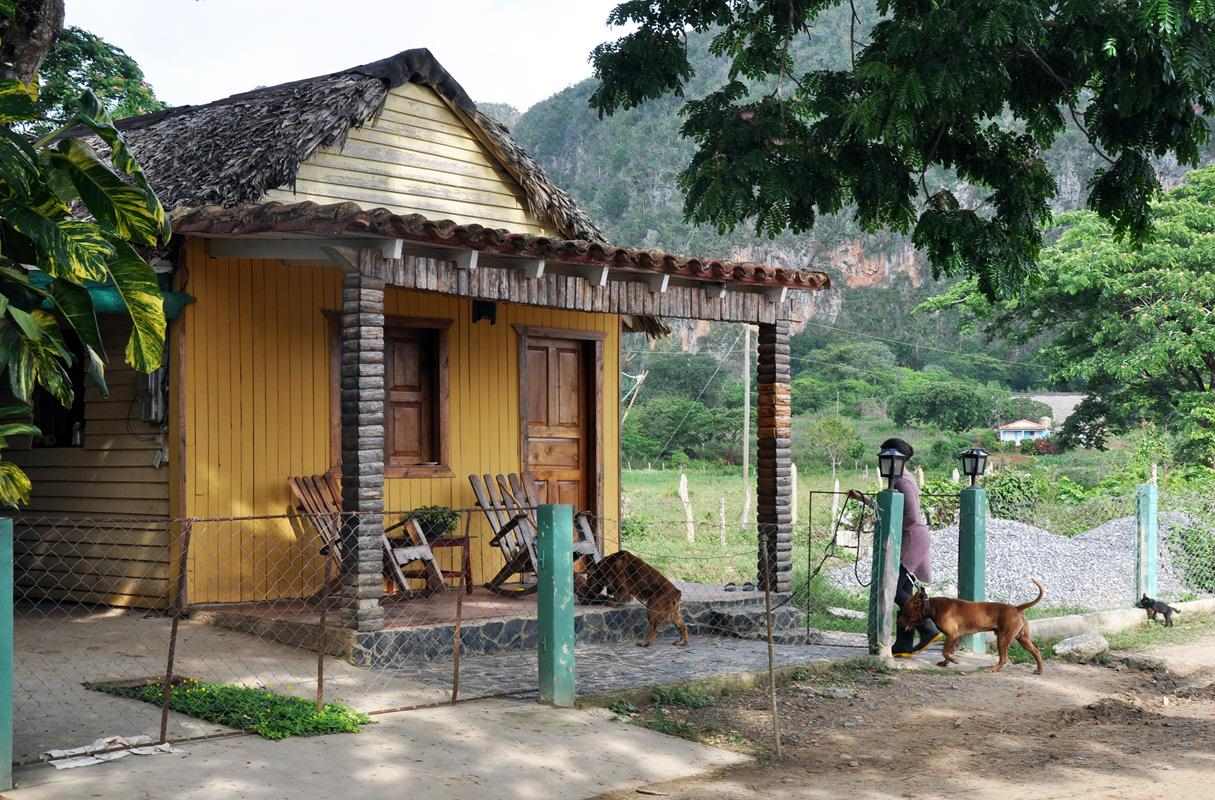
Tobacco leaves drying on the ciling.
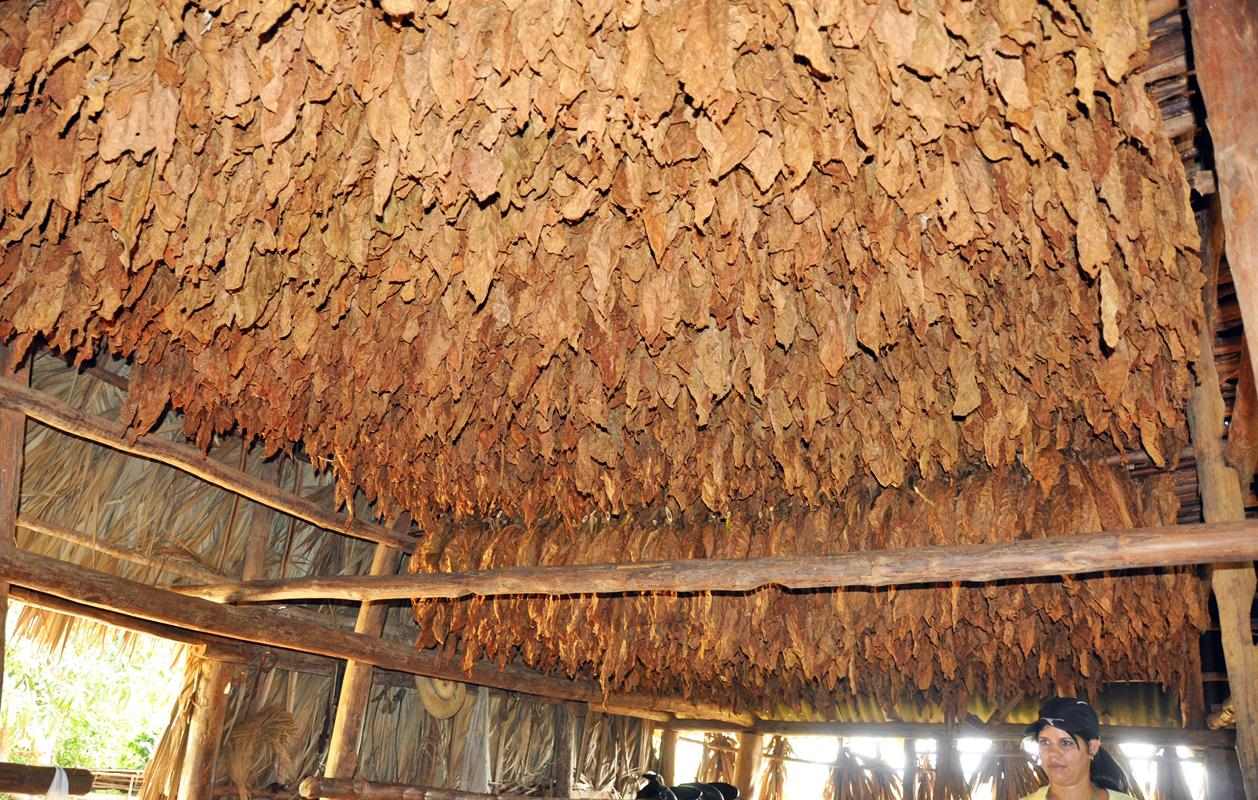
Making cigars
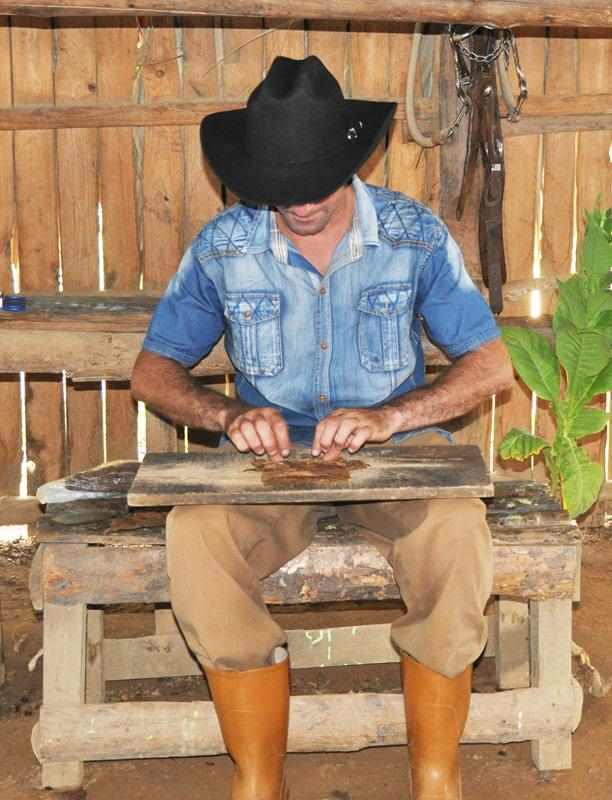
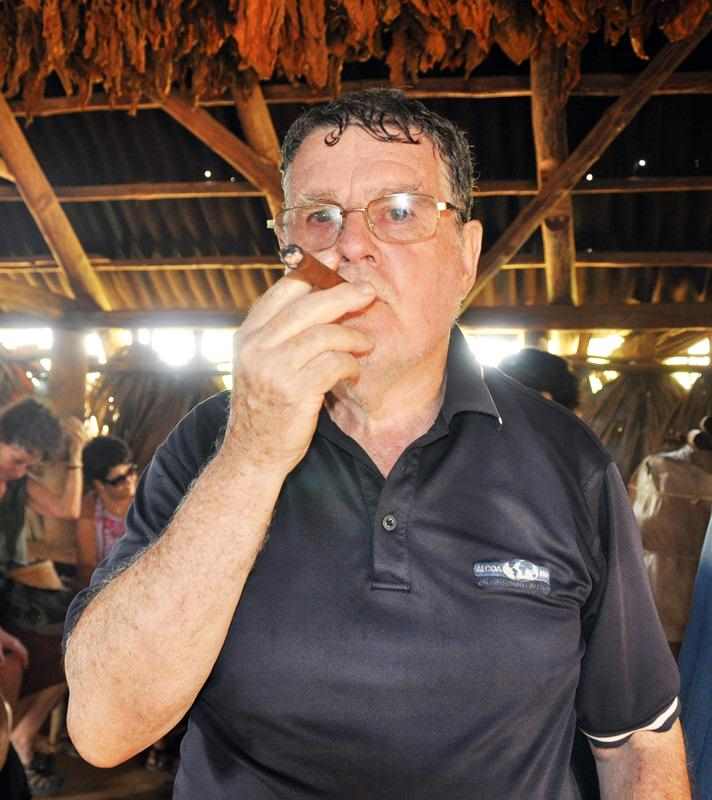
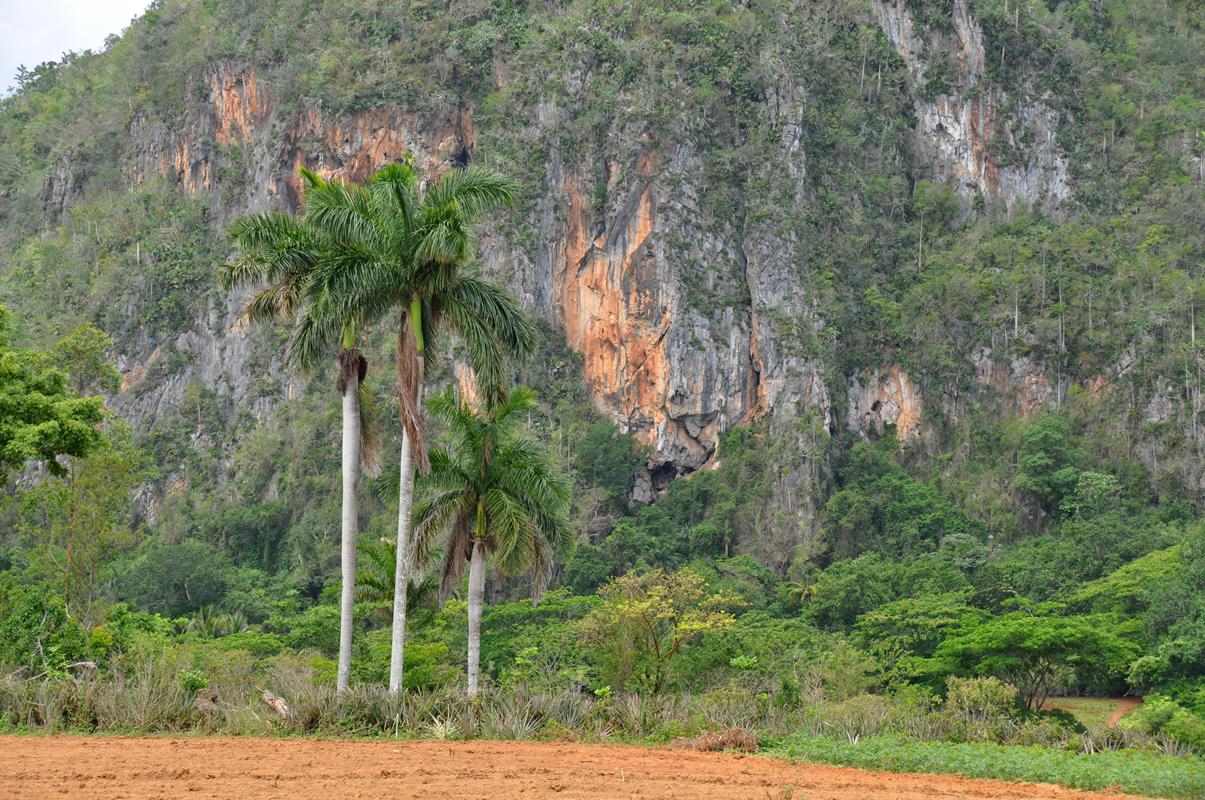
A swim in a cenote (Cueva de Los Peces).
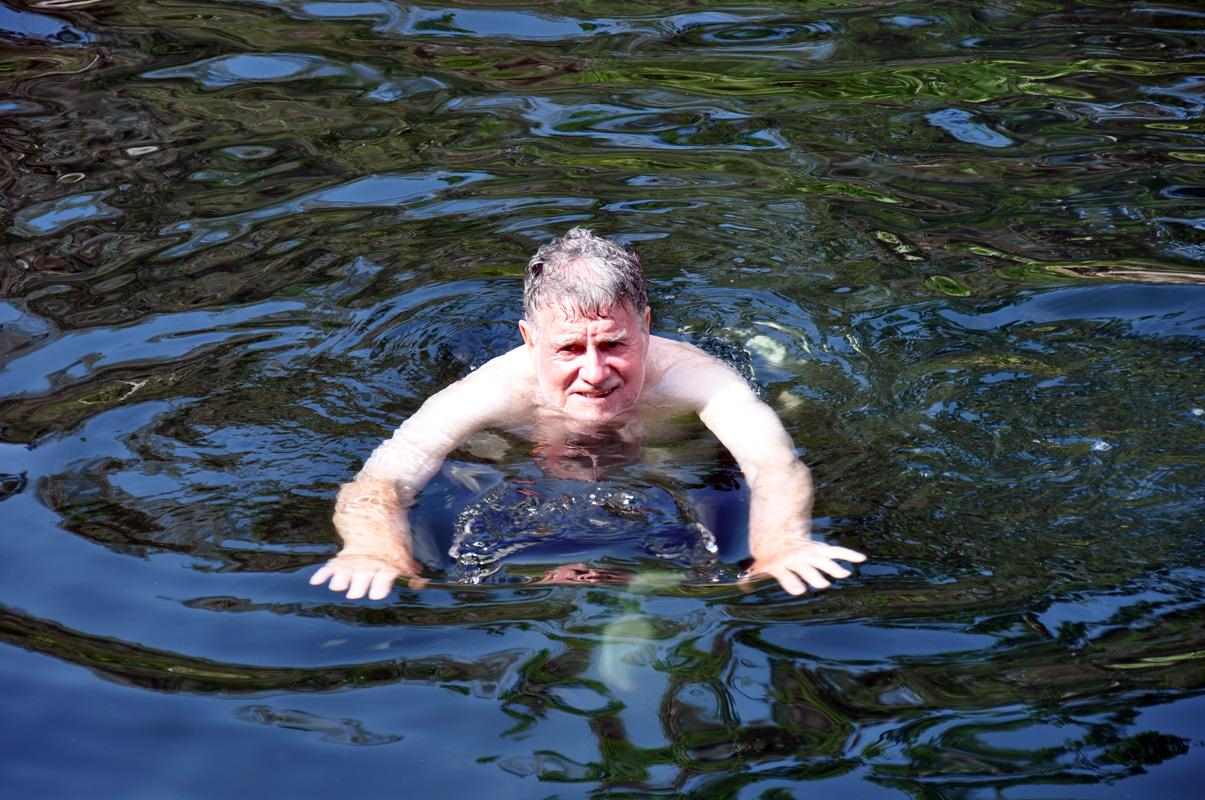
A swim in the Caribbean Sea. at The Bay of Pigs.
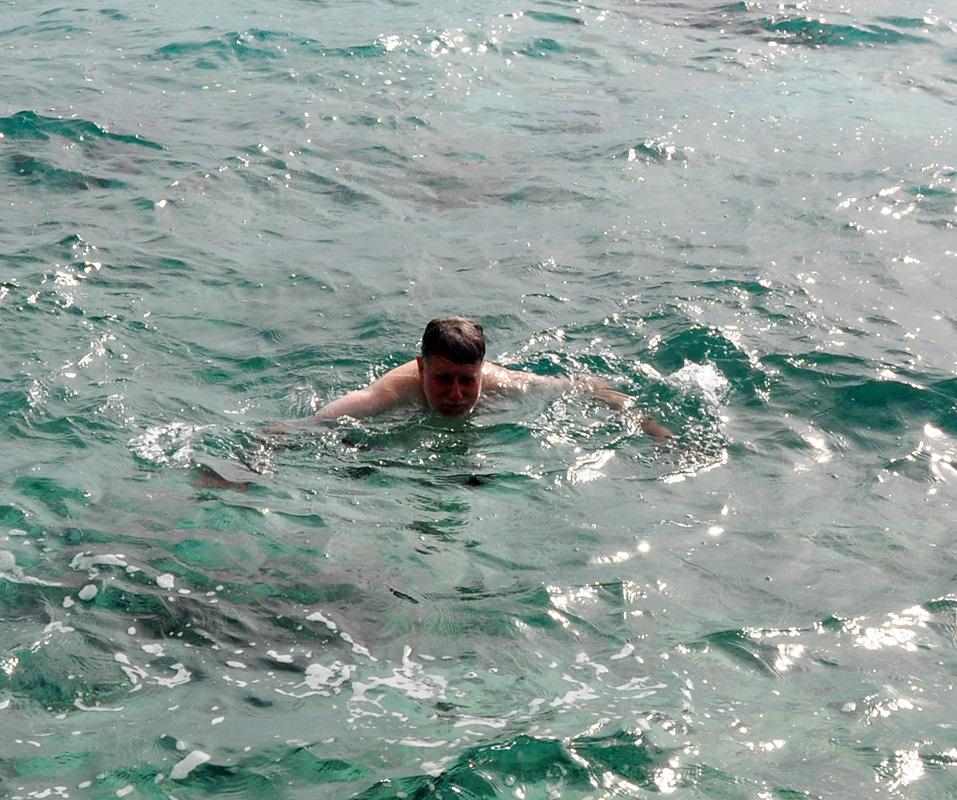
The Bay of Pigs Invasion was a failed military invasion of Cuba undertaken by an American CIA sponsored rebel group in April 1961.
It was a counter-revolutionary military group (made up of mostly Cuban exiles who had travelled to the United States after Castro's takeover,
but also some US military personnel) and intended to overthrow the increasingly communist government of Fidel Castro.
Launched from Guatemala and Nicaragua, the invading force was defeated within three days by the Cuban Revolutionary Armed Forces,
under the direct command of Castro.
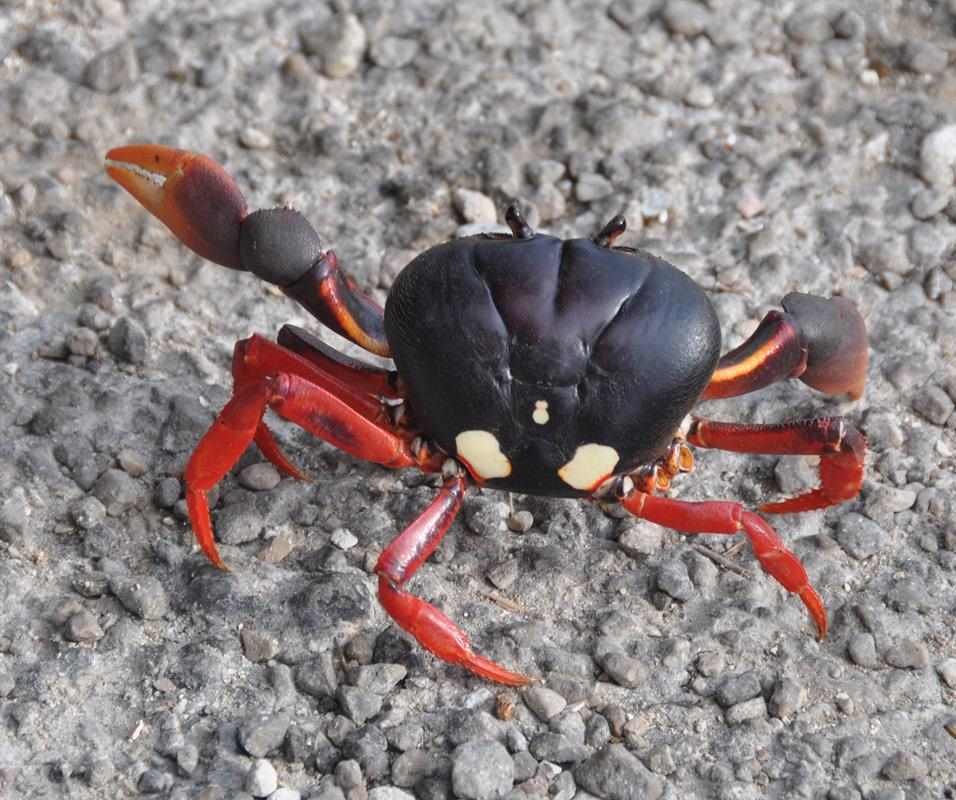
Cienfuegos
The city, located on the southern coast of Cuba, is about 250km from Havana and has a population of 150,000.
The city is dubbed La Perla del Sur (Pearl of the South).
Cienfuegos literally translates to "one hundred fires".
It was founded by French immigrants from Bordeaux and Louisiana in the 1820s who constructed a more
European style town than other more Spanish-like settlements in Latin America.
Cienfuegos port, despite being one of the latest settlements established during the colonial era, soon grew to be a powerful town
due to the fertile fields surrounding it and its position on the trade route between Jamaica and South American cities.

The centre of Cienfuegos was declared a World Heritage Centre in 2005.
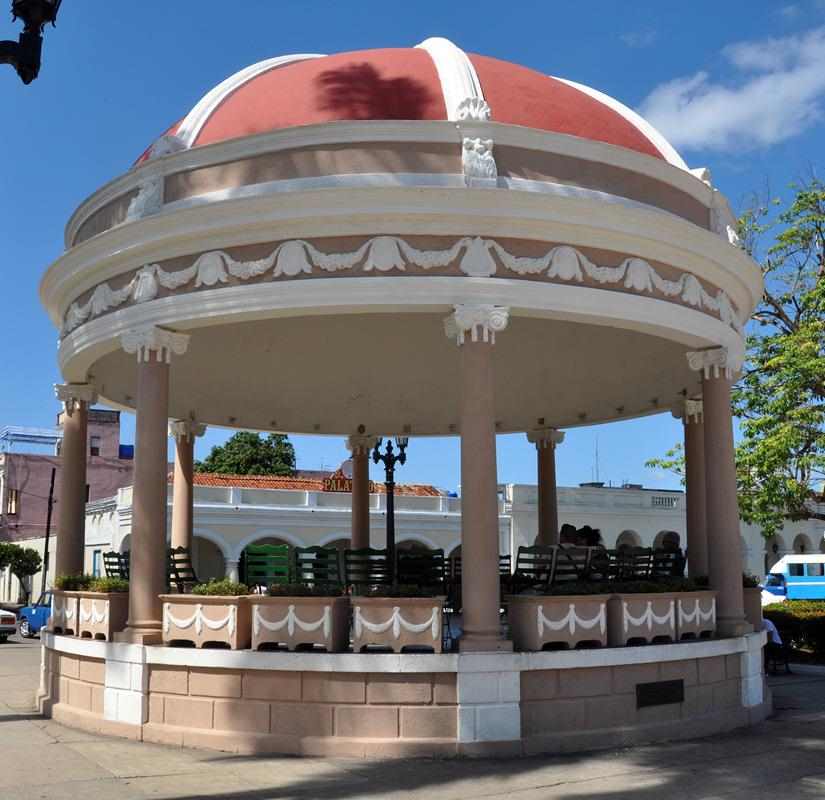
Cienfuegos was the only place that we visited in Cuba where there were shops like we have in our towns and cities.
This was due to the influence of the French settlers.

A merchant-trader built this tower so that he could see shipping movements in the bay.
For a small fee I climbed the tower.
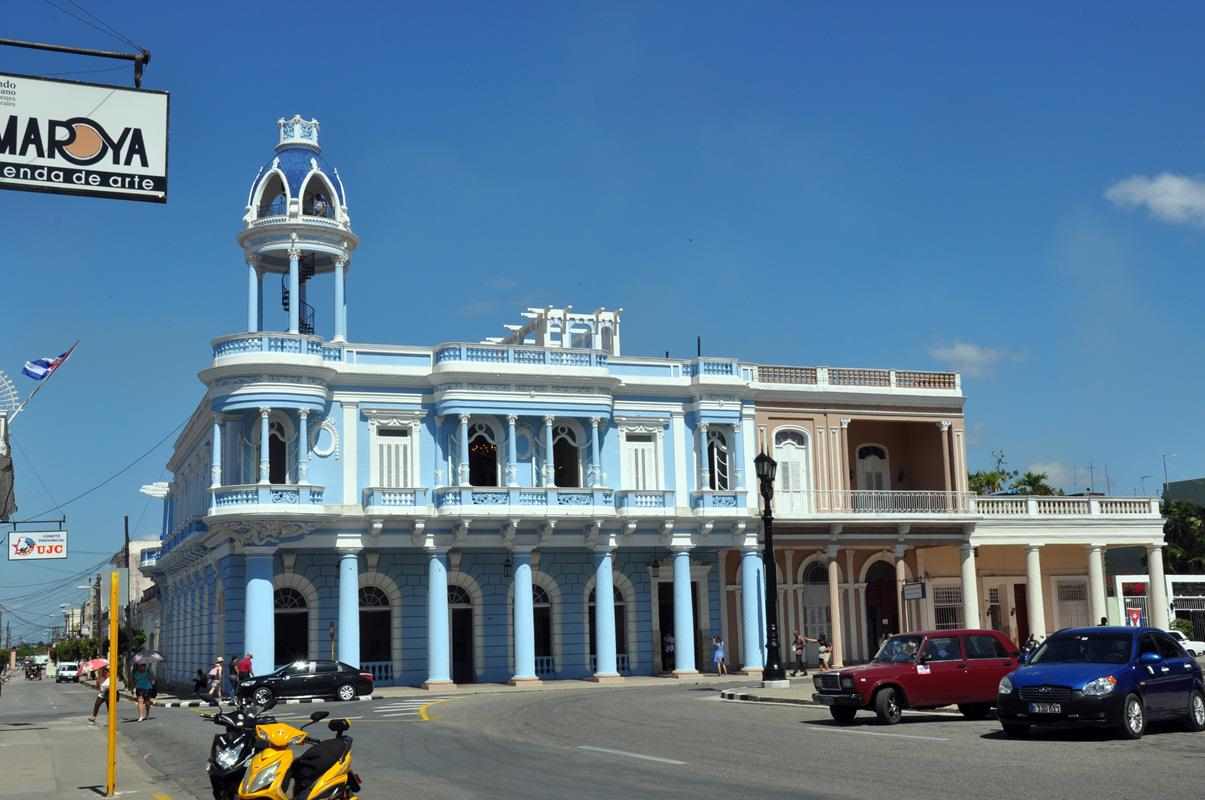
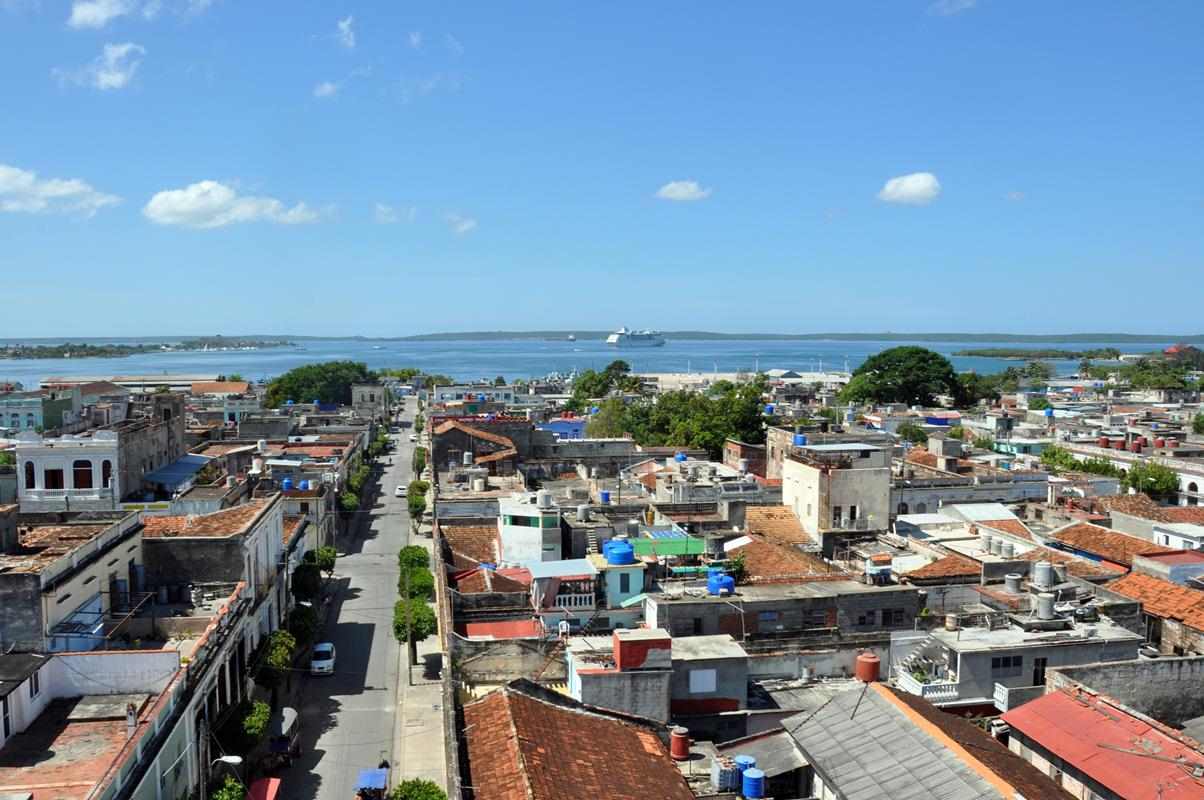
The main square is at least twice as large as those in other cities.
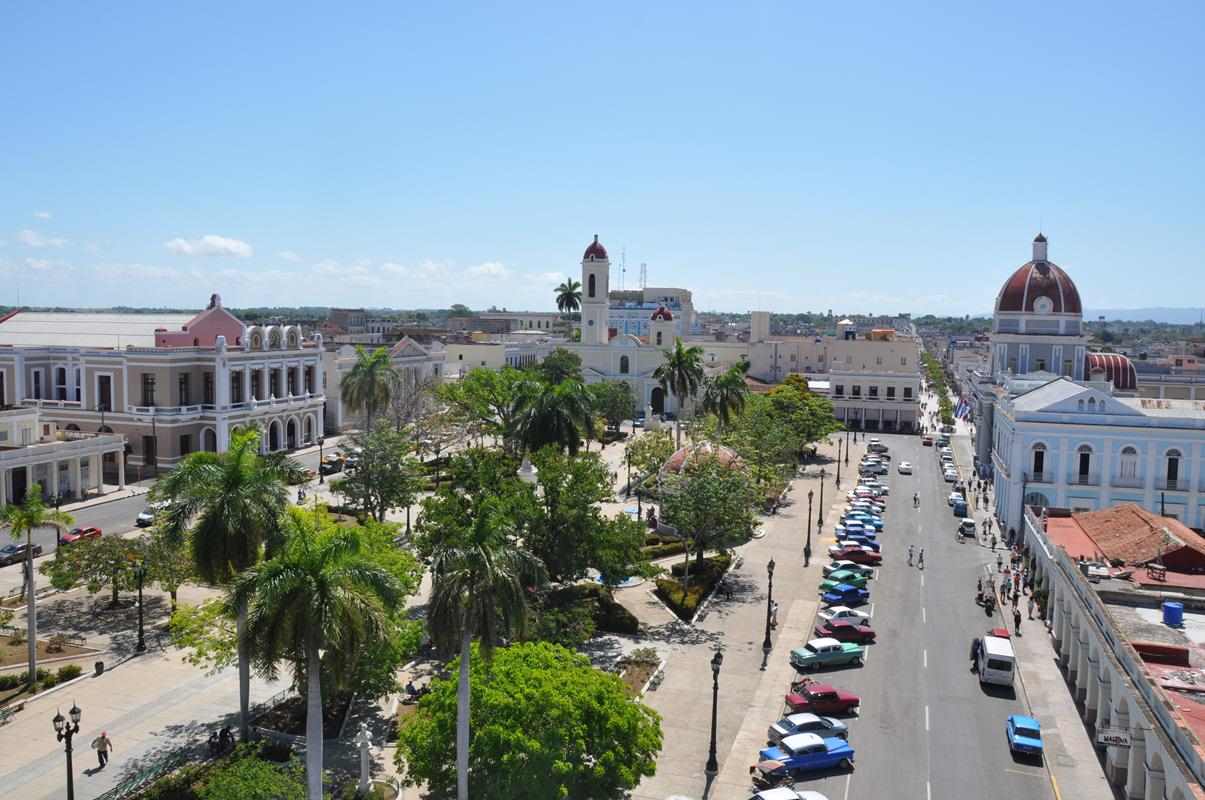
The Catedral de Nuestra Señora de la Purísima Concepción , a cathedral with stained glass work, was built between 1833 and 1869.
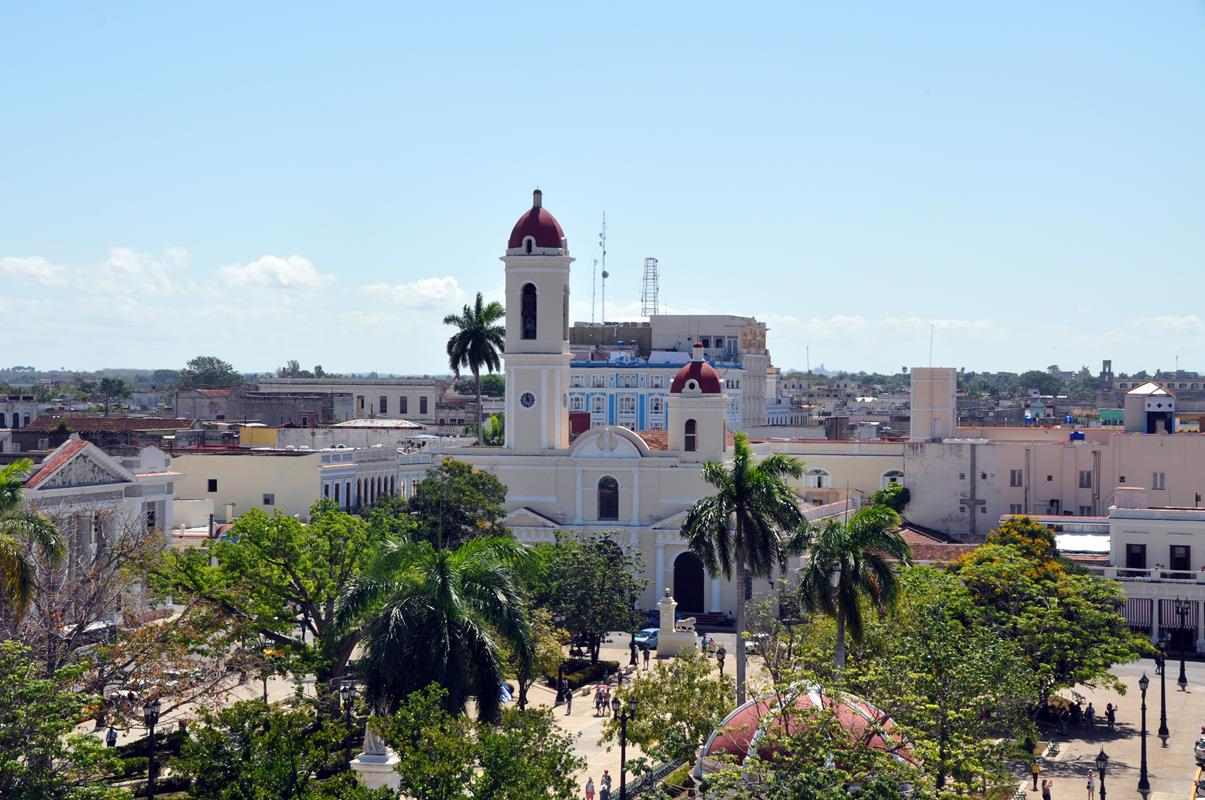
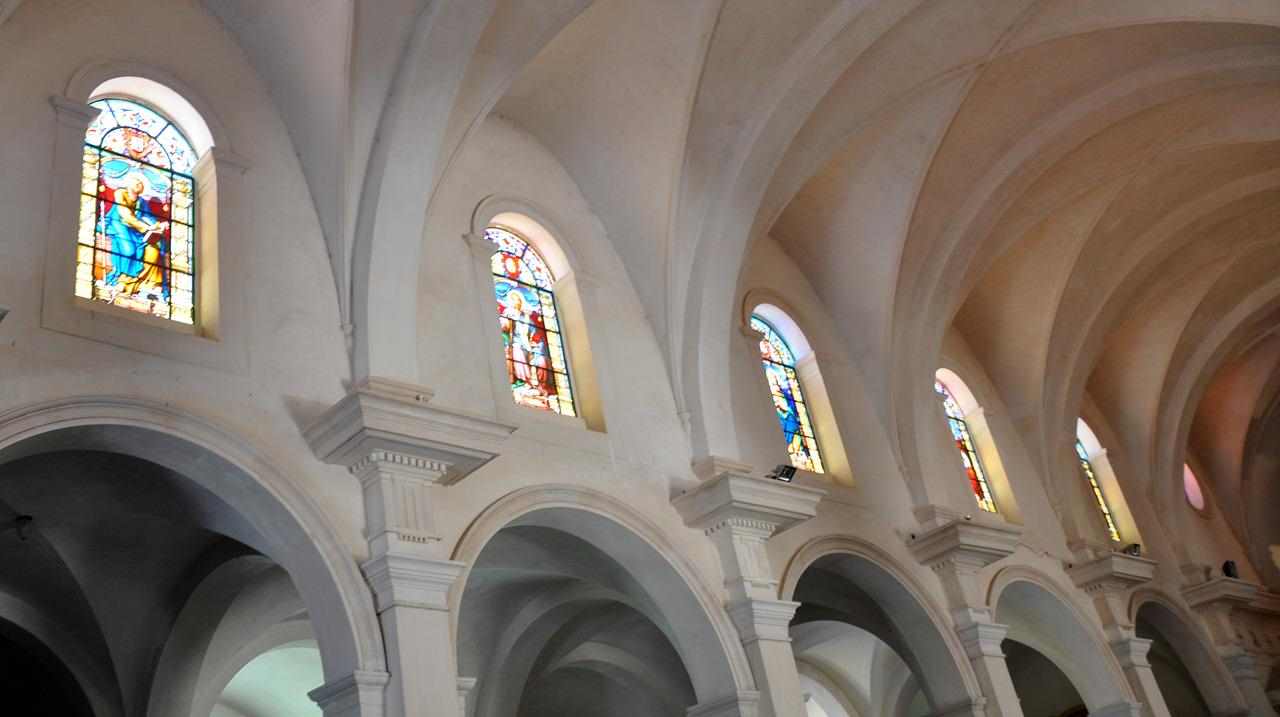
Teatro Terry
This grand old theatre is right in the centre of Cienfuegos, and is in very good shape - outside and in - considering that it dates from the 1880s.
In its time, it has been a major centre for the Arts in Cuba - mega-stars of their day like Enrico Caruso and Sarah Bernhardt sang here.

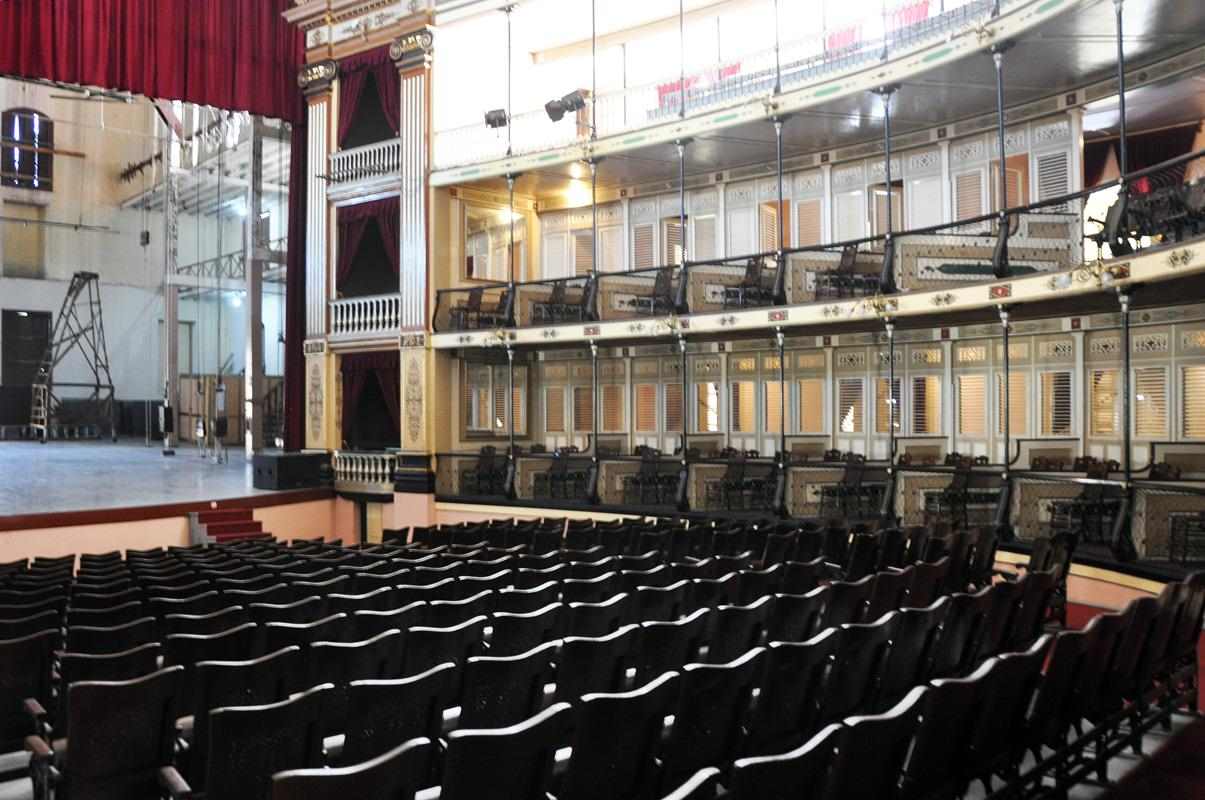
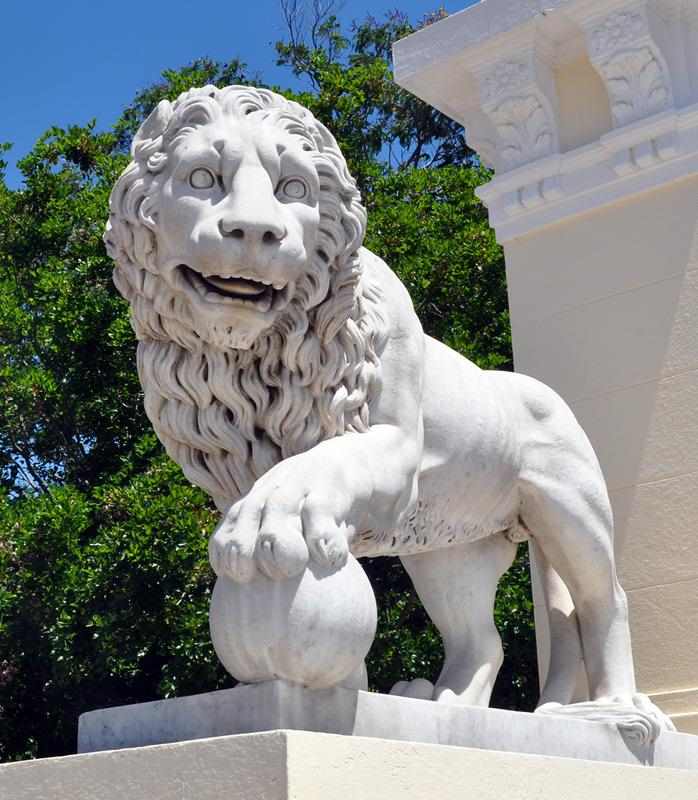
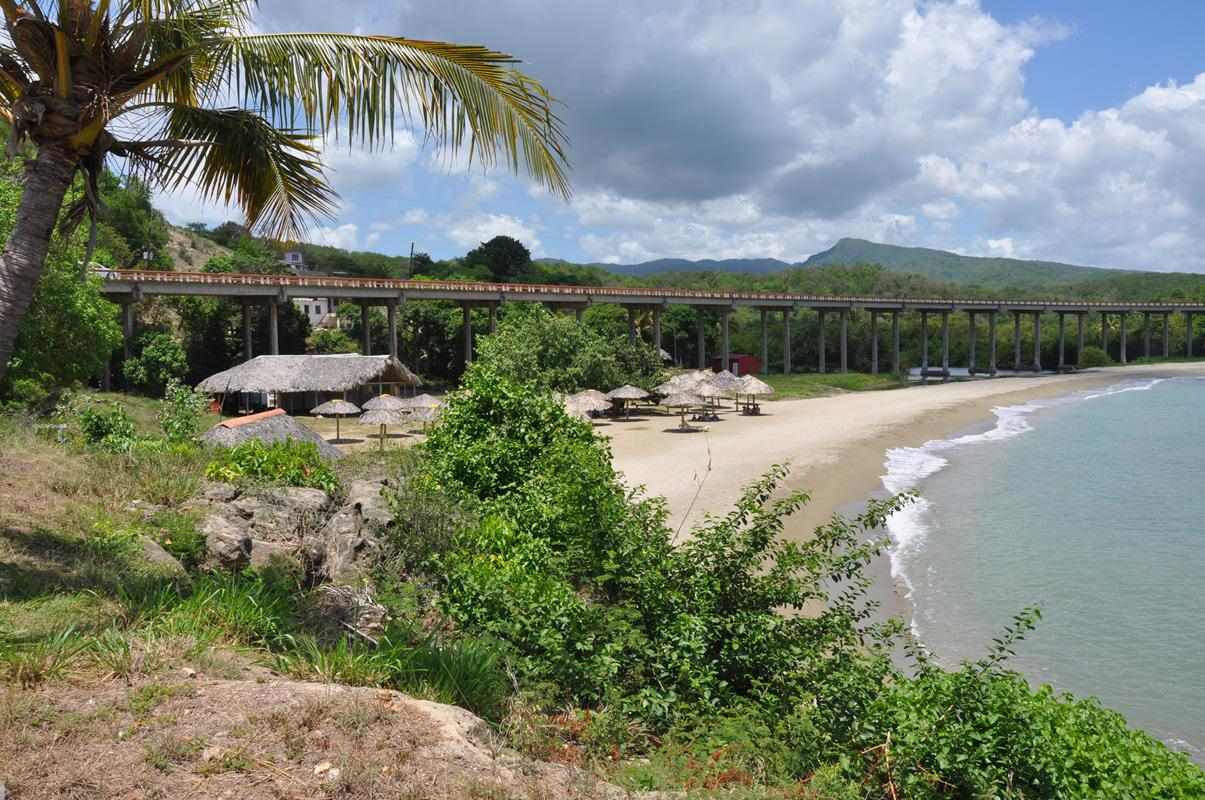
Trinidad
The city of Trinidad has been a UNESCO World Heritage site since 1988.
This is one of the first Cuban cities founded by the Spanish (around 1514). It grew to become the richest in the country
thanks to the production of sugar cane, cattle and tobacco by the slaves that were imported from Africa.
Plantation owners made it a point to show their wealth, so Trinidad, Cuba, is full of beautiful palaces, airy squares and colonial homes.


Fellow traveller, Johnny outside our guesthouse in Trinidad.

El Nicho Waterfall
El Nicho is located inside the Gran Parque Natural Topes de Collantes,
a forested park that extends across the Sierra Escambray mountain range in central Cuba.
It was about an hour and a half drive from Trinidad.
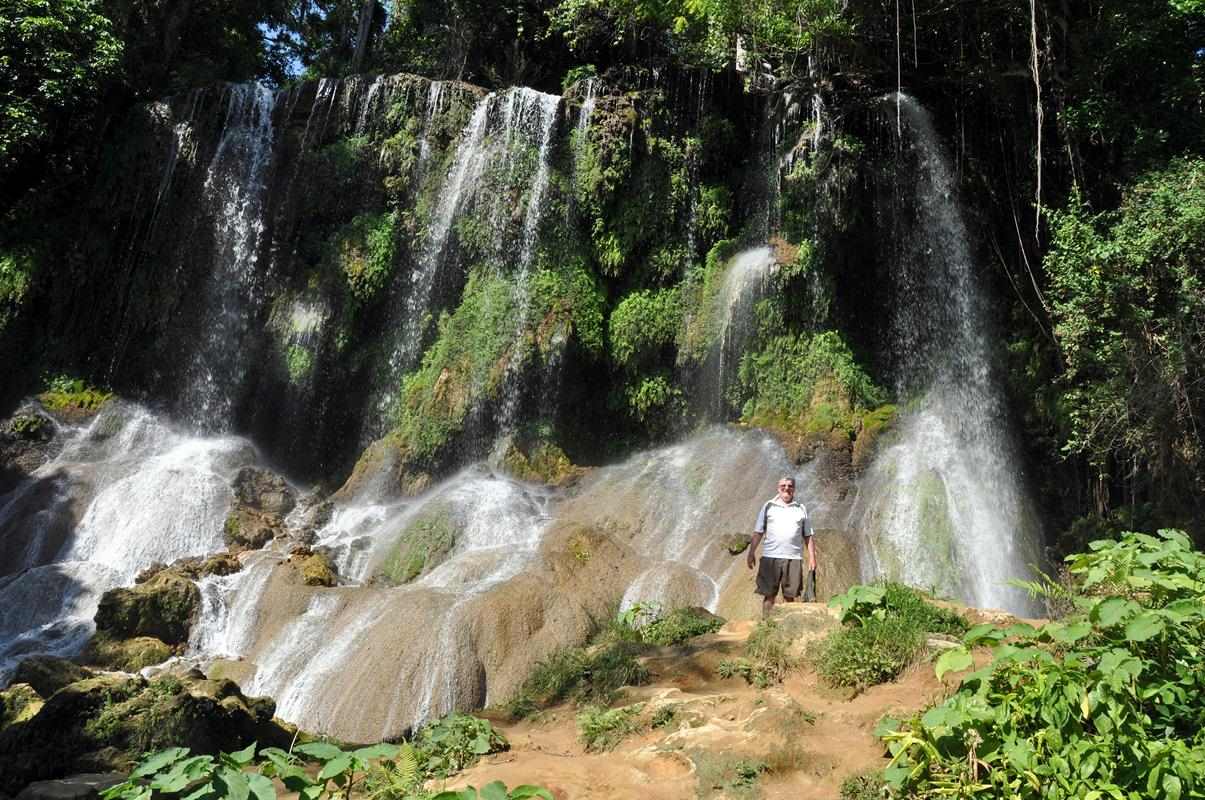
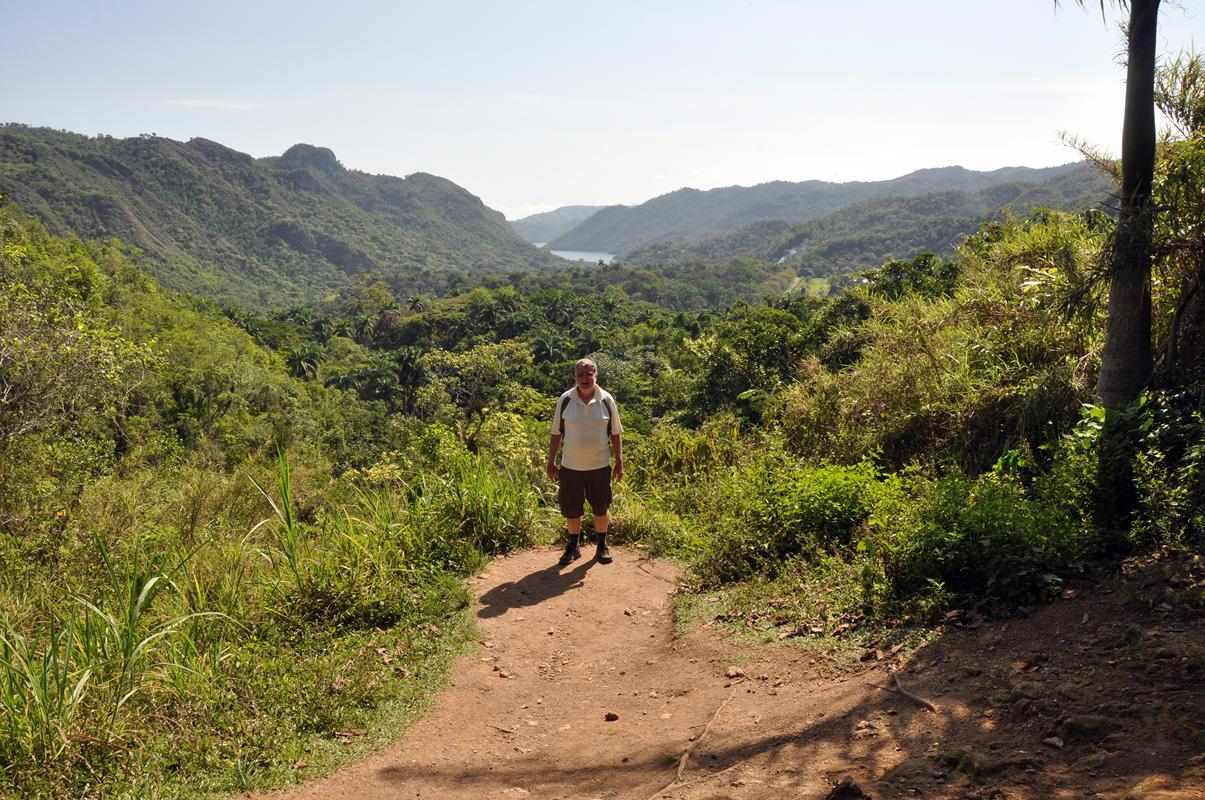
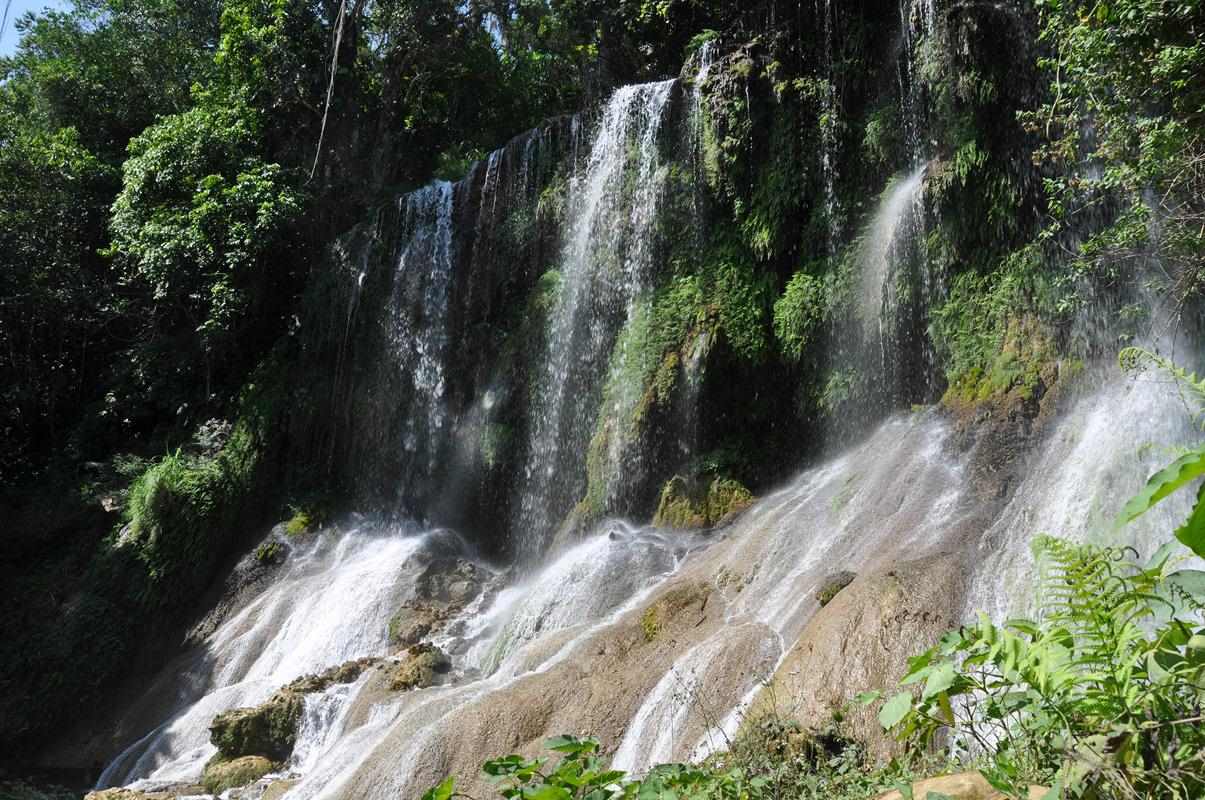
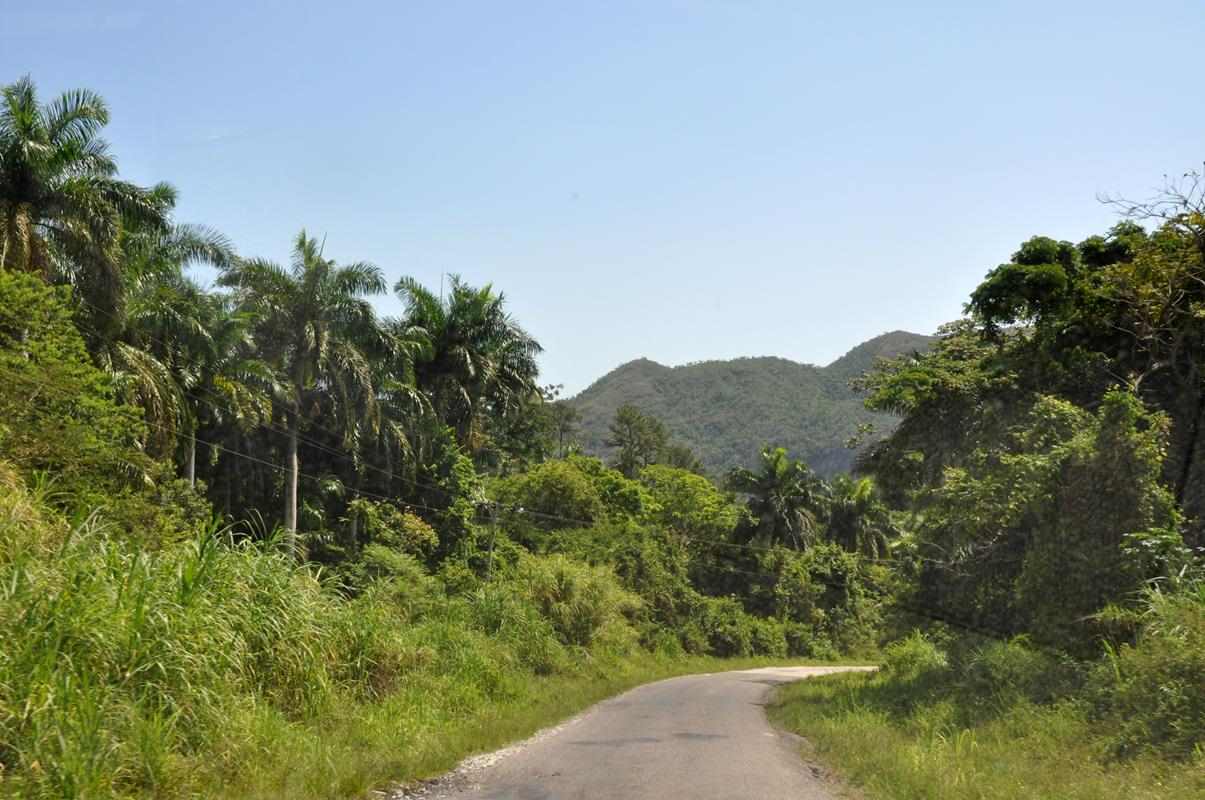
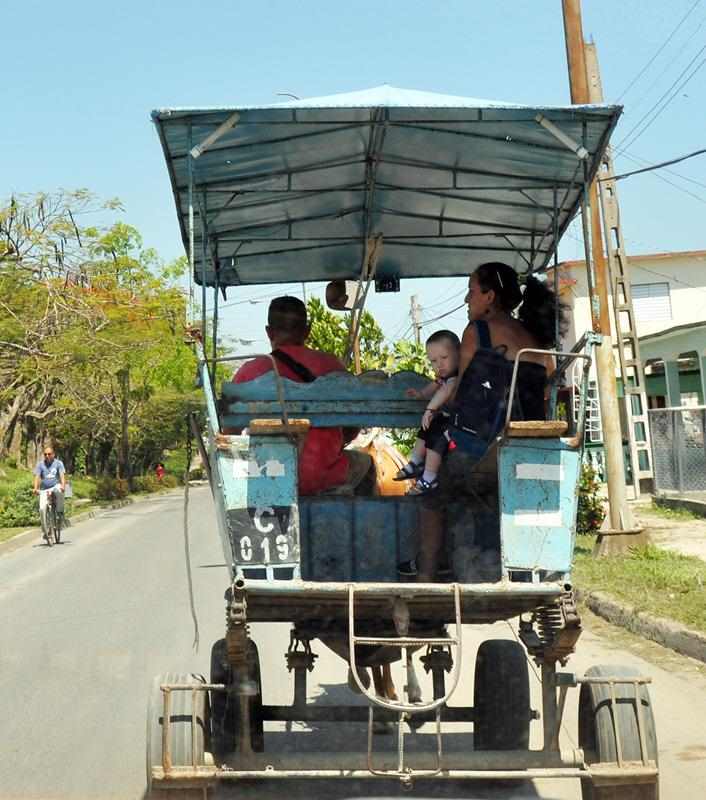
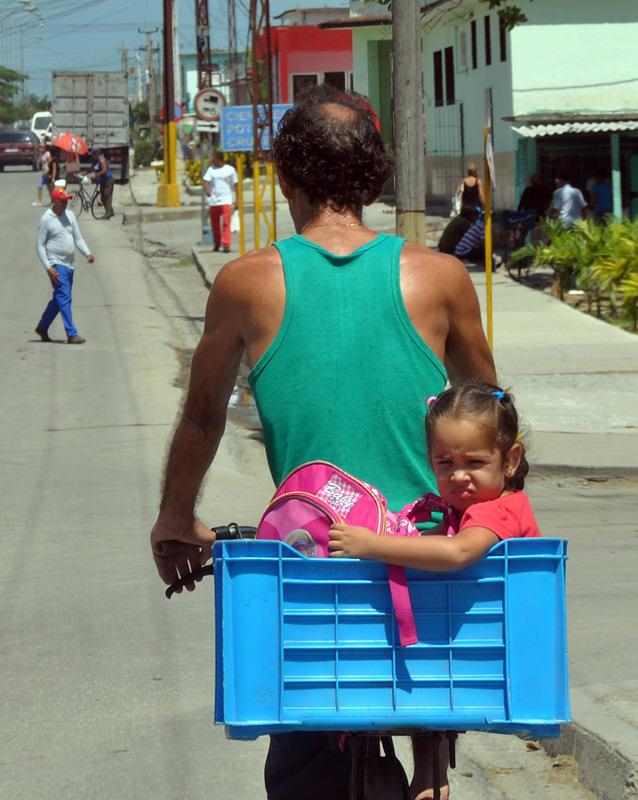

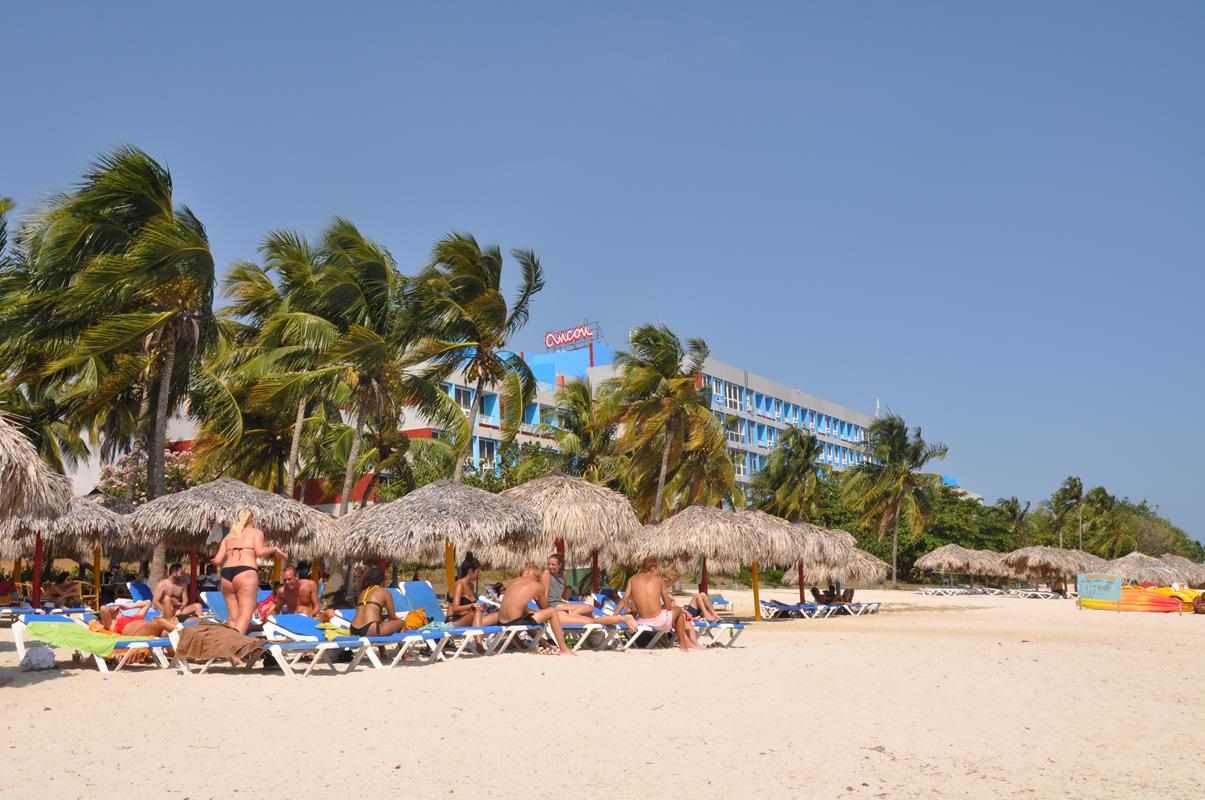
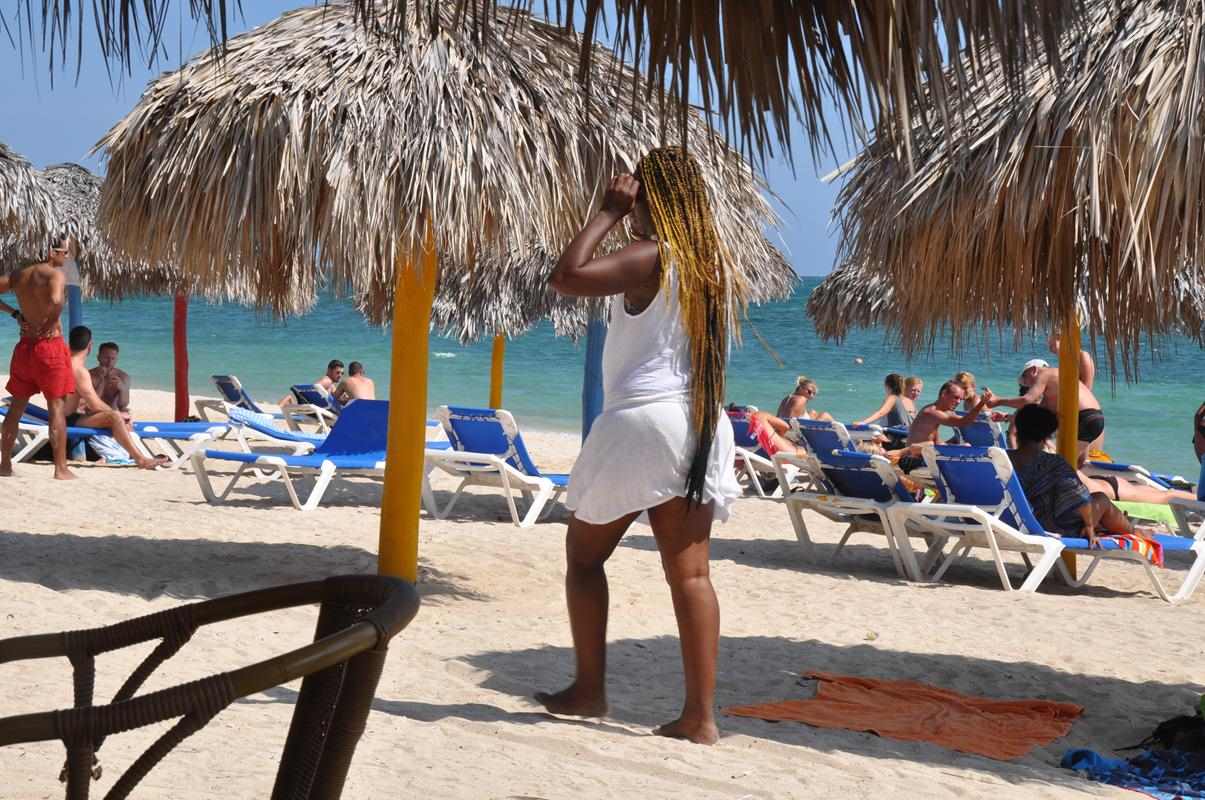
A swim in the Caribbean Sea near Trinidad.
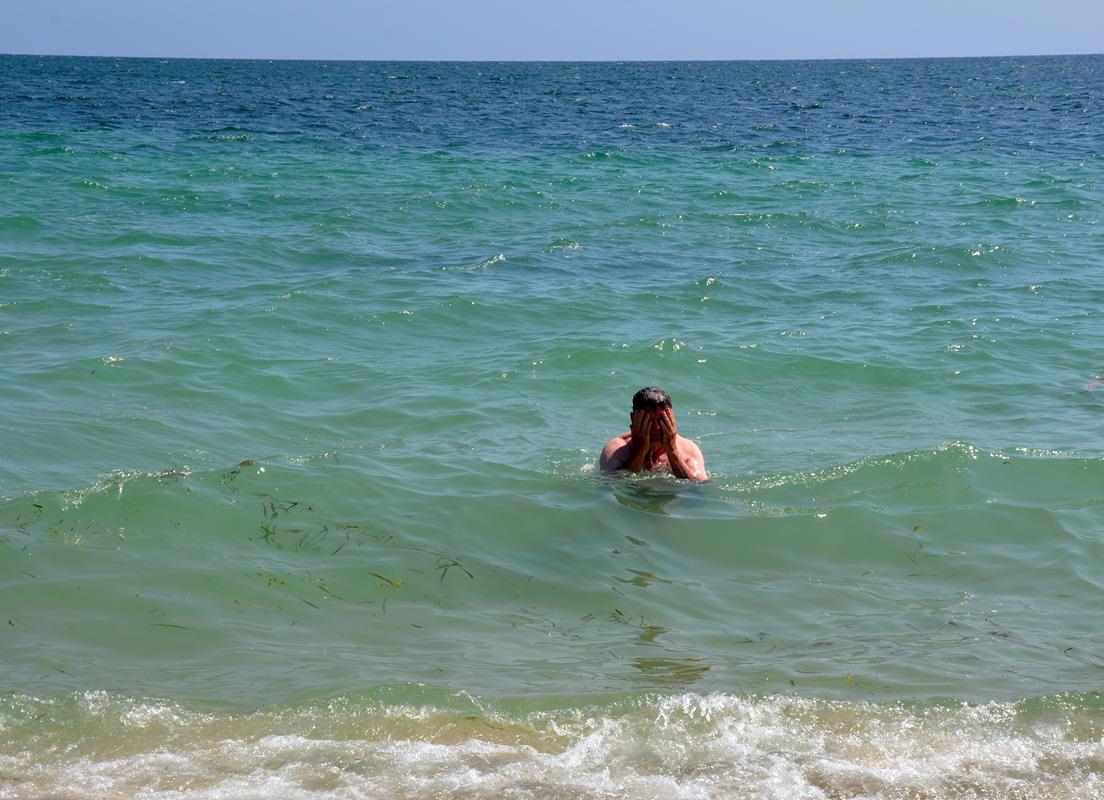
Valle de los Ingenios
About 20km from Trinidad, on the way back to Havana, we stopped at Manacanacu in the Valle de los Ingenios (Valley of the Sugar Mills).
The valley was a centre for sugar production from the late 18th century until the late 19th century.
At the peak of the industry in Cuba there were over fifty sugar cane mills in operation in the three valleys,
with over 30,000 slaves working in the mills and on the sugar cane plantations that surrounded them.
Sugar production was an important industry for Cuba from the earliest settlement by the Spanish, who introduced sugar cane
to the island in 1512,and trade in the commodity enriched Trinidad and the surrounding areas.
The island became the world's foremost producer of sugar during the late 18th and 19th centuries,
when sugar production was the main industry.
The climate and soil were perfect for the cultivation of sugar cane,
and good ports and interior connections facilitated transport and exportation of the refined sugar.
The abolition of slavery by the Spanish in 1820 made the practice of importing slaves more difficult,
but it was not until the Wars of Independence in the 19th century that the economic dominance of the area came to an end,
as many of the sugar mills were abandoned or became run down.
The valley is a World Heritage Area.
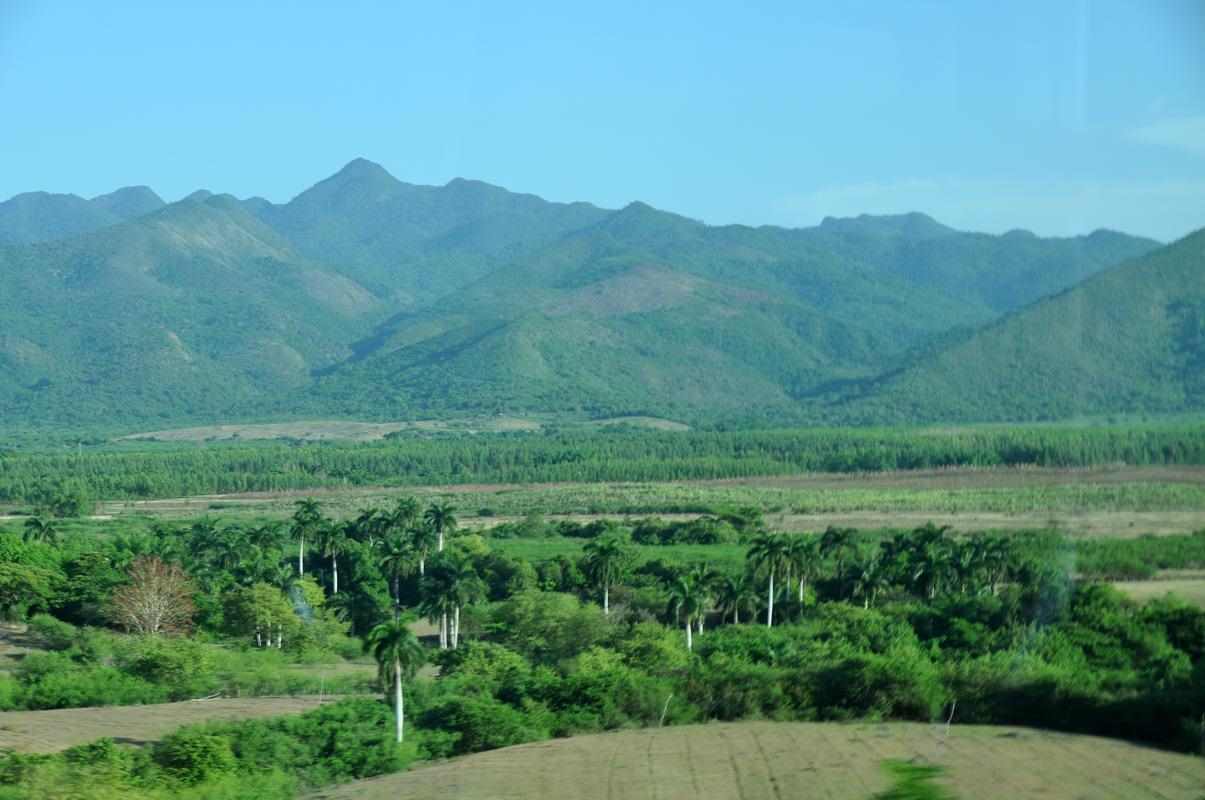
The 45 metre tower was constructed in 1816 by the owner, Alejo Maria Iznaga y Borrell.
The height and magnificence of the tower served to display Iznaga's power over his slaves
and his stature in the sugar industry and local society.
At one time it was the tallest structure in Cuba.
According to experts, the bell that formerly hung on top of the tower announced the beginning and the end of the work day for the slaves,
as well as the times for prayers to the Holy Virgin in the morning, midday, and afternoon.
It was also used to sound an alarm in case of fire or slave escape.
[Orledis, our tour-leader, told us a different story ...
There were 2 brothers who were both trying to woo the same girl.
One dug a deep well for the community to impress her, the other brother built this tower.
Neither succeded, the girl married their father.]
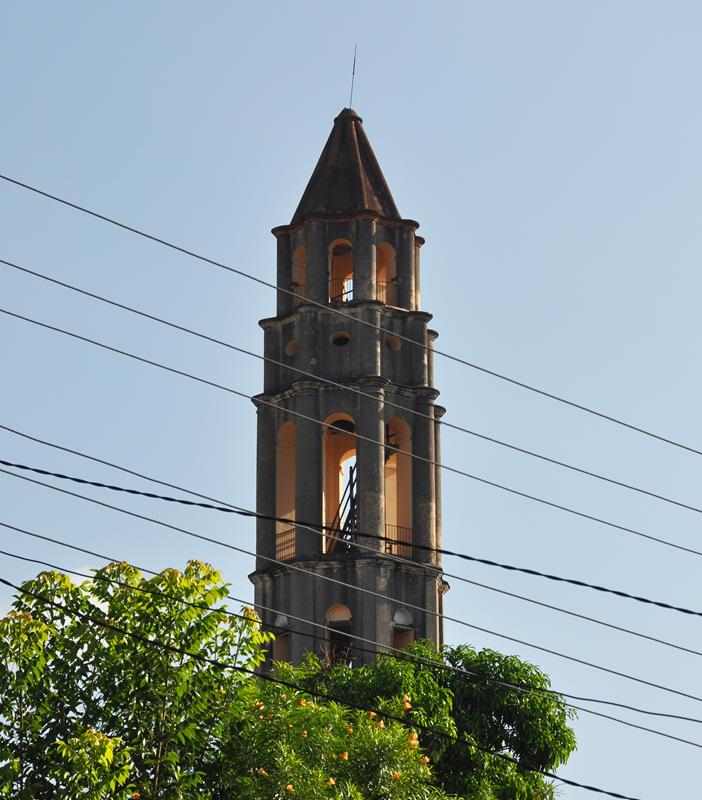
A view from the top of the tower.
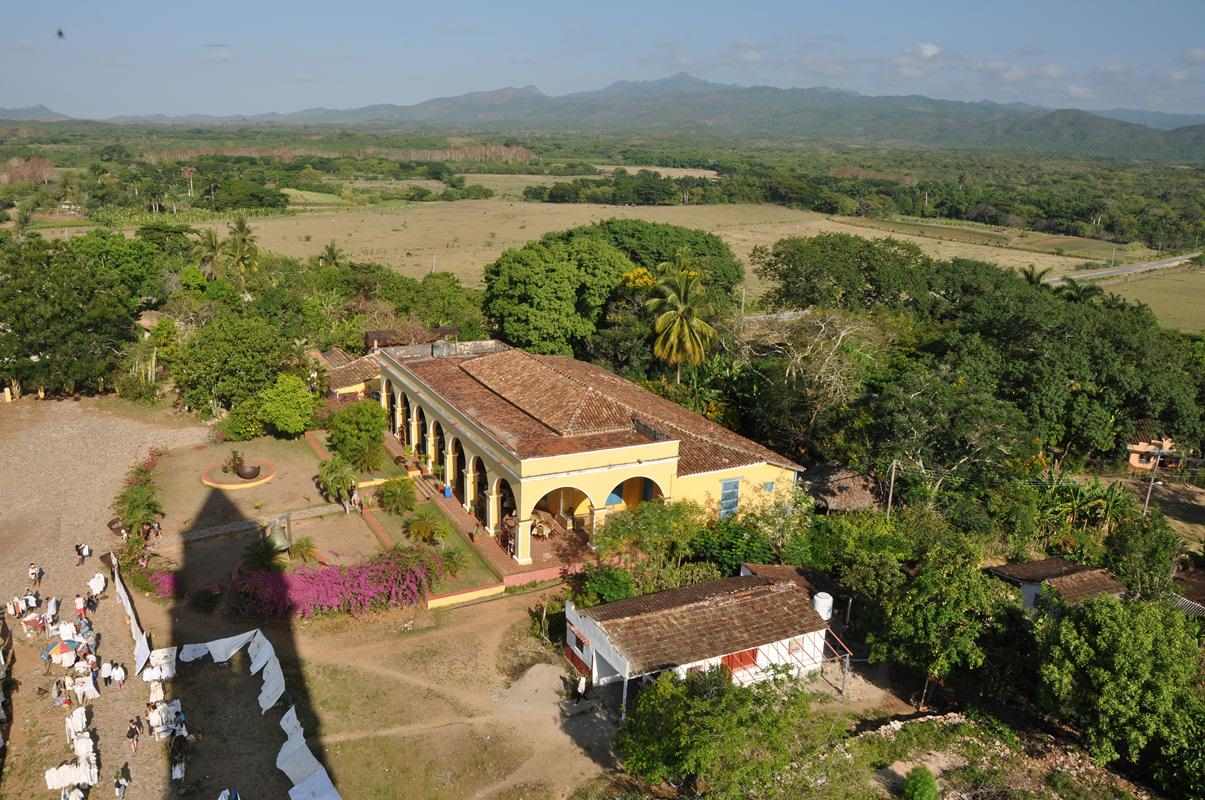
We stopped at a small farm between Trinidad and Santa Clara.
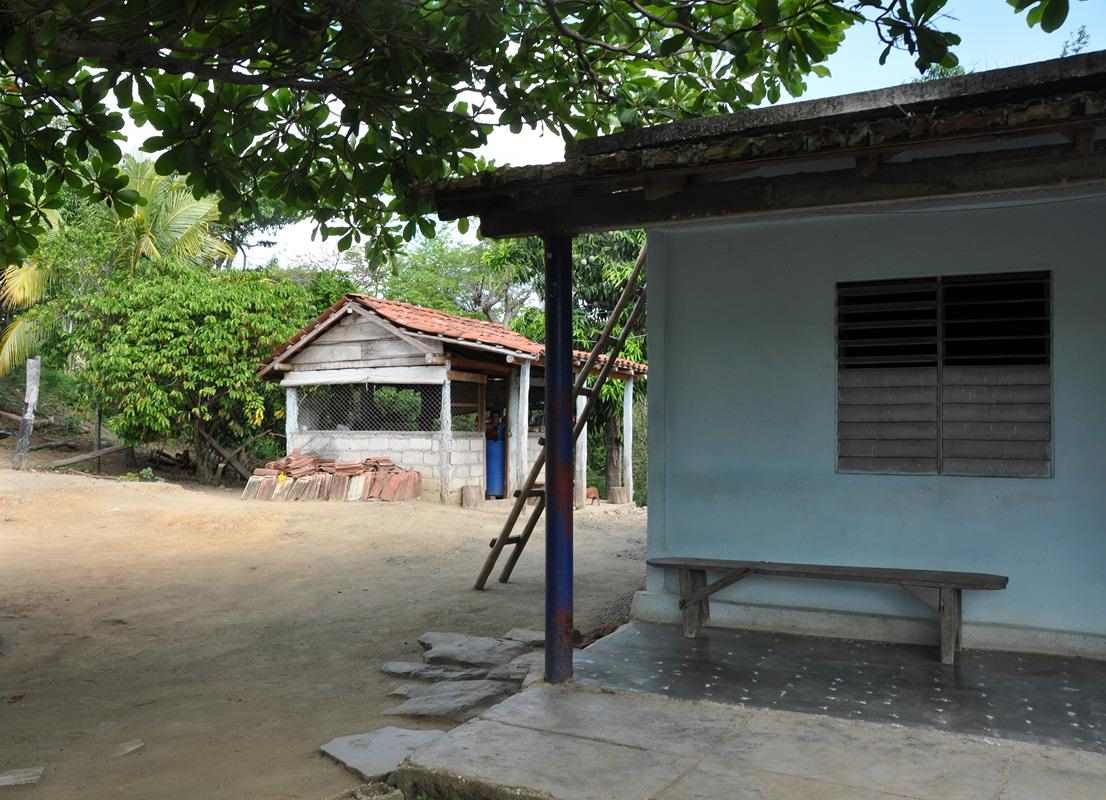
With Orledis, our tour-leader, and the farm owners
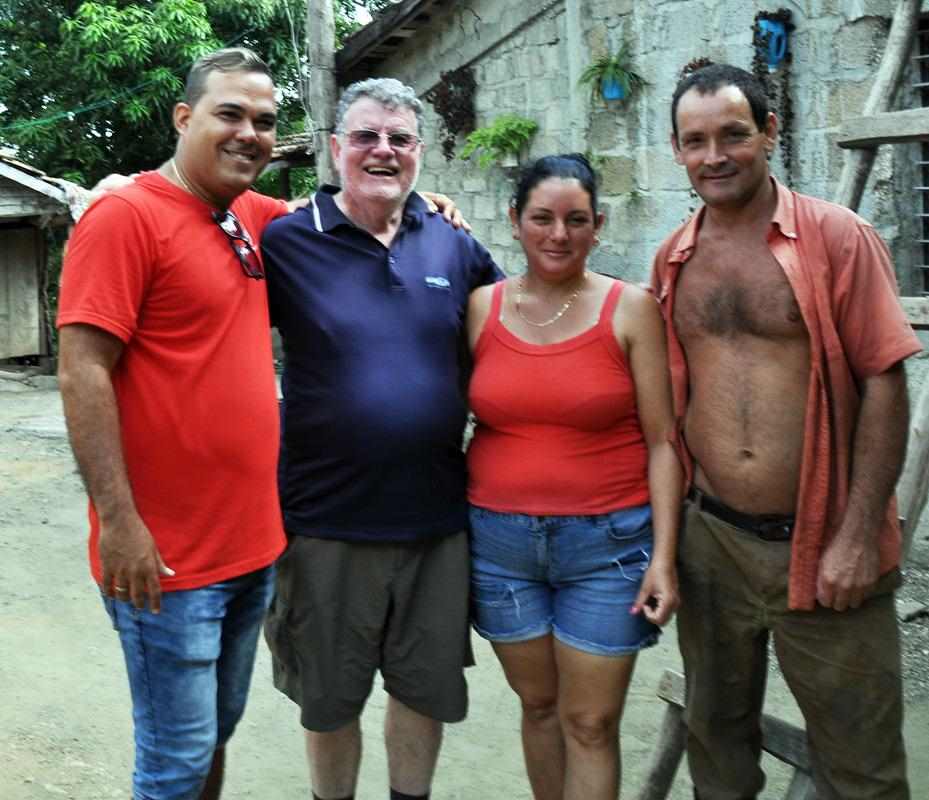
It appeared that a lot, maybe most, of the Cuban people lived this way.
It reminded me of similar scenes that I have seen in Asia (Laos, Bali, Myamnar ...) and in Africa (Uganda, Kenya, ...).
Coffee plants, tobacco plants, cashews, bananas, mangoes and other fruit, pigs, a couple of cows, poultry were grown or raised on the small property.
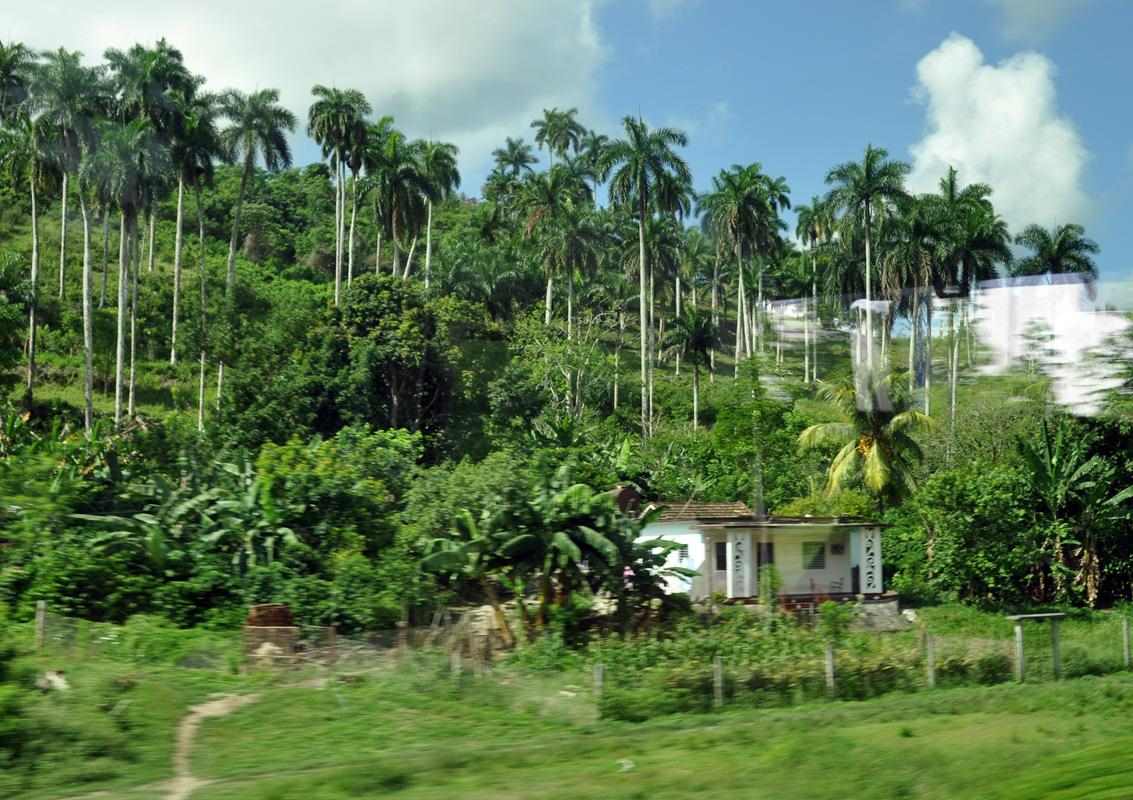
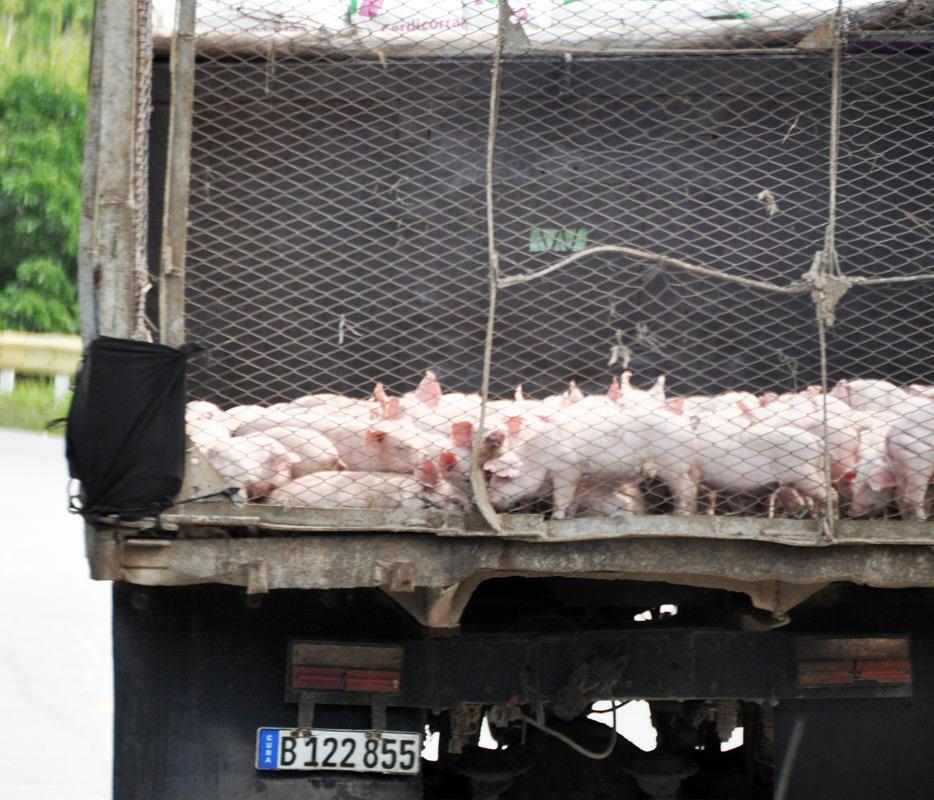
Che Guevara Mausoleum (Conjunto Escultórico Memorial Comandante Ernesto Che Guevara)
Located in Santa Clara, the mausoleum houses the remains of the revolutionary Ernesto "Che" Guevara
and twenty-nine of his fellow combatants killed in 1967 during Guevara's attempt to spur an armed uprising in Bolivia.
Guevara was buried here in 1997 after his remains were discovered in Bolivia, exhumed and returned to Cuba.
Santa Clara was chosen as the location in remembrance of Guevara's troops taking the city in December 1958, during the Battle of Santa Clara.
The result of this final battle of the Cuban Revolution was Cuban dictator Fulgencio Batista fleeing into exile.
The memorial was very simple inside.
There were jungle themes, photographs and a few of his personal items (rifles, binoculars, radios, ...).
Photography was not allowed inside.
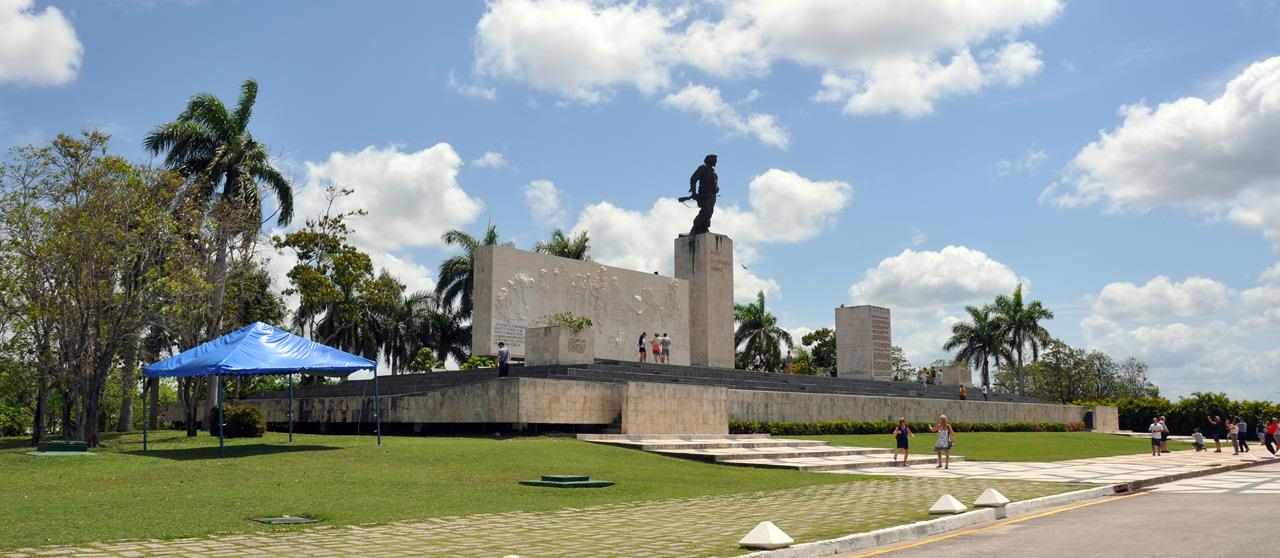

Santa Clara

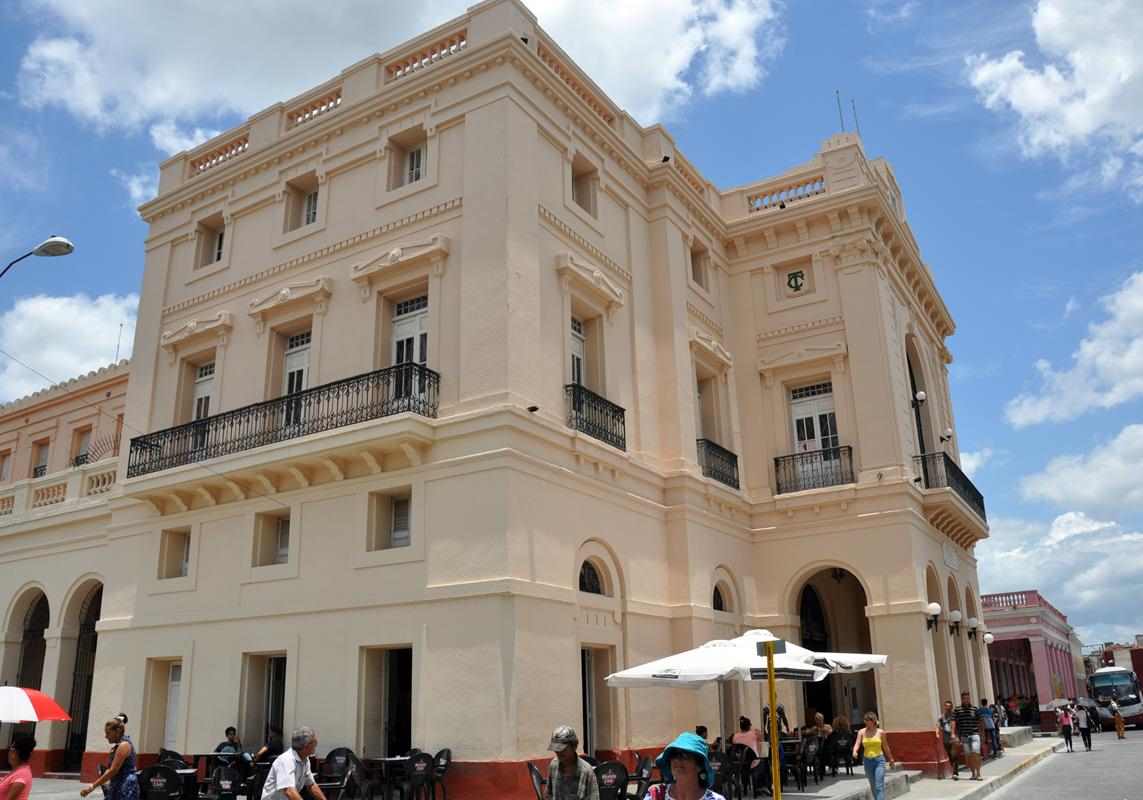
And so back to Havana along landscaped roads with not a lot of traffic.
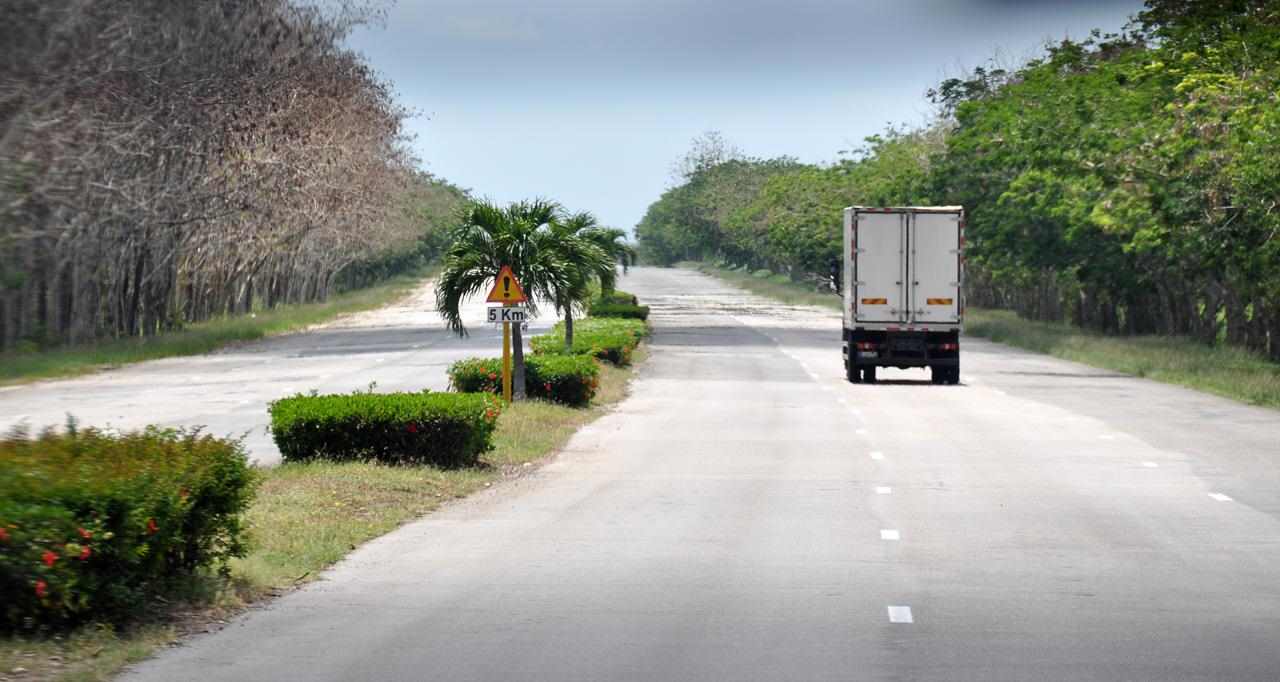
I enjoyed my week in Cuba.
From Havana I flew back to Cancún in Mexico.
My 6-week Central American trip continued through Mexico to Belize and Guatemala.

In April-May 2019 I had a 6-week trip to Central America.
(Melbourne - Los Angeles – Mexico – Cuba – Belize – Guatemala –
Mexico City – Los Angeles - Melbourne)
After my 14-day IntrepidTravel tour from Mexico City to Cancun, I had a-hour flight to Havana for my week-long IntrepidTravel trour of Cuba.
Havana
Havana was founded by the Spanish in the 16th century and due to its strategic location it served as a springboard
for the Spanish conquest of the Americas, becoming a stopping point for treasure-laden Spanish galleons returning to Spain.
Old Havana was declared a UNESCO World Heritage Site in 1982.
The Cuban Capitol Building
Gran Teatro de La Habana Alicia Alonso (Havana's Grand Theatre Alicia Alonso)
Havana Cathedral (Catedral de San Cristobal)
The Jesuits began construction of the cathedral in 1748 on the site of an earlier church and it was completed in 1777,
well after King Carlos III expelled the Jesuits from the island in 1767.
The Cathedral's front elevation is Baroque with asymmetrical bell towers.
One can see fossilized marine fauna and flora in the stone walls as the Cathedral is,
as many buildings in Havana are, constructed out of blocks of coral.
Christopher Columbus’ remains were kept in the cathedral between 1796 and 1898, before they were taken to Seville Cathedral in Spain.
Old Havana has a number of city squares.
The Cathedral Square is bound by some fine former residences as well as the cathedral.
Havana began as a trading port, and suffered regular attacks by buccaneers, pirates, and French corsairs.
Morro Castle (Castillo de los Tres Reyes Magos del Morro), is named after the three biblical Magi.
It is a fortress guarding the entrance to Havana Bay.
The design was drawn up by the Italian engineer Battista Antonelli; originally under the control of Spain,
the fortress was captured by the British in 1762, and was returned to the Spanish under treaty terms a year later.
Plaza Vieja
Viaje Fantástico
No one knows the meaning behind this giant sculpture of a nude woman with a fork riding a rooster in Plaza Vieja.
It is said that around the year 1600 the first fountain of the city could be seen at the San Francisco de Asis Square.
In 1836 it was replaced by a beautiful fountain made of white Carrara marble by Giuseppe Gaggini, under the good auspices of the Villanueva Count.
This fountain is called Fuente de los Leones (Lions Fountain).
You did not have to look hard to see the old American cars in Cuba. They were ubiquitous.
The José Martí Memorial (Monumento a José Martí) is a memorial to José Martí, located on the northern side of the Plaza de la Revolución.
It is the largest monument to a writer in the world.
José Julián Martí Pérez (1853 – 1895) was a Cuban poet, essayist, journalist, translator, professor, and publisher,
who is considered a Cuban national hero and an important figure in Latin American literature.
Through his writings and political activity, he became a symbol of Cuba's bid for independence against Spain in the 19th century.
From adolescence, he dedicated his life to the promotion of liberty, political independence for Cuba, and intellectual independence for all Spanish Americans.
His death was used as a cry for Cuban independence from Spain by both the Cuban revolutionaries and those Cubans previously reluctant to start a revolt.
We had a 3-hour trip in a modern, air-conditioned, 24-seat, Chinese-made bus from Havana to Viñales in the eastern area of the island of Cuba.
Overlooking the lush Viñales Valley.
The Viñales Valley has been listed as a UNESCO World Heritage Site for the outstanding karst landscape and traditional agriculture
as well as the local architecture, crafts and music.
Viñales
Viñales is a small town and municipality in the north-central Pinar del Río Province of Cuba.
Tourism centered on the Viñales Valley is developing.
The Viñales Valley, a UNESCO World Heritage Site, is an agricultural area, where crops of fruit, vegetables,
coffee and especially tobacco are grown by traditional methods.
My room at the guesthouse, Casa Alberto, in Vinales.
Viñales Valley farmland walk
We had a 4-hour walk through these rich farmlands in the Viñales Valley with a local guide, Alex.
The Viñales Valley has been listed as a UNESCO World Heritage Site for the outstanding karst landscape and traditional agriculture
as well as the local architecture, crafts and music.
Tobacco leaves drying on the ciling.
Making cigars
A swim in a cenote (Cueva de Los Peces).
A swim in the Caribbean Sea. at The Bay of Pigs.
The Bay of Pigs Invasion was a failed military invasion of Cuba undertaken by an American CIA sponsored rebel group in April 1961.
It was a counter-revolutionary military group (made up of mostly Cuban exiles who had travelled to the United States after Castro's takeover,
but also some US military personnel) and intended to overthrow the increasingly communist government of Fidel Castro.
Launched from Guatemala and Nicaragua, the invading force was defeated within three days by the Cuban Revolutionary Armed Forces,
under the direct command of Castro.
Cienfuegos
The city, located on the southern coast of Cuba, is about 250km from Havana and has a population of 150,000.
The city is dubbed La Perla del Sur (Pearl of the South).
Cienfuegos literally translates to "one hundred fires".
It was founded by French immigrants from Bordeaux and Louisiana in the 1820s who constructed a more
European style town than other more Spanish-like settlements in Latin America.
Cienfuegos port, despite being one of the latest settlements established during the colonial era, soon grew to be a powerful town
due to the fertile fields surrounding it and its position on the trade route between Jamaica and South American cities.
The centre of Cienfuegos was declared a World Heritage Centre in 2005.
Cienfuegos was the only place that we visited in Cuba where there were shops like we have in our towns and cities.
This was due to the influence of the French settlers.
A merchant-trader built this tower so that he could see shipping movements in the bay.
For a small fee I climbed the tower.
The main square is at least twice as large as those in other cities.
The Catedral de Nuestra Señora de la Purísima Concepción , a cathedral with stained glass work, was built between 1833 and 1869.
Teatro Terry
This grand old theatre is right in the centre of Cienfuegos, and is in very good shape - outside and in - considering that it dates from the 1880s.
In its time, it has been a major centre for the Arts in Cuba - mega-stars of their day like Enrico Caruso and Sarah Bernhardt sang here.
Trinidad
The city of Trinidad has been a UNESCO World Heritage site since 1988.
This is one of the first Cuban cities founded by the Spanish (around 1514). It grew to become the richest in the country
thanks to the production of sugar cane, cattle and tobacco by the slaves that were imported from Africa.
Plantation owners made it a point to show their wealth, so Trinidad, Cuba, is full of beautiful palaces, airy squares and colonial homes.
Fellow traveller, Johnny outside our guesthouse in Trinidad.
El Nicho Waterfall
El Nicho is located inside the Gran Parque Natural Topes de Collantes,
a forested park that extends across the Sierra Escambray mountain range in central Cuba.
It was about an hour and a half drive from Trinidad.
A swim in the Caribbean Sea near Trinidad.
Valle de los Ingenios
About 20km from Trinidad, on the way back to Havana, we stopped at Manacanacu in the Valle de los Ingenios (Valley of the Sugar Mills).
The valley was a centre for sugar production from the late 18th century until the late 19th century.
At the peak of the industry in Cuba there were over fifty sugar cane mills in operation in the three valleys,
with over 30,000 slaves working in the mills and on the sugar cane plantations that surrounded them.
Sugar production was an important industry for Cuba from the earliest settlement by the Spanish, who introduced sugar cane
to the island in 1512,and trade in the commodity enriched Trinidad and the surrounding areas.
The island became the world's foremost producer of sugar during the late 18th and 19th centuries,
when sugar production was the main industry.
The climate and soil were perfect for the cultivation of sugar cane,
and good ports and interior connections facilitated transport and exportation of the refined sugar.
The abolition of slavery by the Spanish in 1820 made the practice of importing slaves more difficult,
but it was not until the Wars of Independence in the 19th century that the economic dominance of the area came to an end,
as many of the sugar mills were abandoned or became run down.
The valley is a World Heritage Area.
The 45 metre tower was constructed in 1816 by the owner, Alejo Maria Iznaga y Borrell.
The height and magnificence of the tower served to display Iznaga's power over his slaves
and his stature in the sugar industry and local society.
At one time it was the tallest structure in Cuba.
According to experts, the bell that formerly hung on top of the tower announced the beginning and the end of the work day for the slaves,
as well as the times for prayers to the Holy Virgin in the morning, midday, and afternoon.
It was also used to sound an alarm in case of fire or slave escape.
[Orledis, our tour-leader, told us a different story ...
There were 2 brothers who were both trying to woo the same girl.
One dug a deep well for the community to impress her, the other brother built this tower.
Neither succeded, the girl married their father.]
A view from the top of the tower.
We stopped at a small farm between Trinidad and Santa Clara.
With Orledis, our tour-leader, and the farm owners
It appeared that a lot, maybe most, of the Cuban people lived this way.
It reminded me of similar scenes that I have seen in Asia (Laos, Bali, Myamnar ...) and in Africa (Uganda, Kenya, ...).
Coffee plants, tobacco plants, cashews, bananas, mangoes and other fruit, pigs, a couple of cows, poultry were grown or raised on the small property.
Che Guevara Mausoleum (Conjunto Escultórico Memorial Comandante Ernesto Che Guevara)
Located in Santa Clara, the mausoleum houses the remains of the revolutionary Ernesto "Che" Guevara
and twenty-nine of his fellow combatants killed in 1967 during Guevara's attempt to spur an armed uprising in Bolivia.
Guevara was buried here in 1997 after his remains were discovered in Bolivia, exhumed and returned to Cuba.
Santa Clara was chosen as the location in remembrance of Guevara's troops taking the city in December 1958, during the Battle of Santa Clara.
The result of this final battle of the Cuban Revolution was Cuban dictator Fulgencio Batista fleeing into exile.
The memorial was very simple inside.
There were jungle themes, photographs and a few of his personal items (rifles, binoculars, radios, ...).
Photography was not allowed inside.
Santa Clara
And so back to Havana along landscaped roads with not a lot of traffic.
I enjoyed my week in Cuba.
From Havana I flew back to Cancún in Mexico.
My 6-week Central American trip continued through Mexico to Belize and Guatemala.